These tests were shot by Ben Rowsell of NZCS
Tests using tungsten light on dark mostly synthetic fabrics, cameras set to 3200K. Lens used was a
32mm Master Prime. Lamp was 2K Tungsten (only light source).
Equipment provided by Imagezone Cameras, NZ Camera Hire, Panavision NZ & Cinestuff.
Fabric on far left is black dyed wool, fabric on right is black polyester.
Colour chart and white poly in frame as reference.
All exposure compensations were made according to filter (ie 1 stop on lens for each layer of ND, 2/3
Stop for T1 filter) therefore there are some variations on exposure most apparent in the heavier NDs
that you may in practice open up more than 1 stop.
On the Alexa I compensated the green colour shift on the Tiffen T1 by introducing a Magenta tint in
the camera. All other filters were recorded without colour adjustment.
The Alexa footage was converted from Log C to 709 using a standard Arri LUT in Scratch.
On the F55 the camera was not colour adjusted for the T1 filter.
The F55 footage was converted from SLOG to 709 manually, matching the Alexa footage visually
using Resolve. This was because Scratch was having trouble with the footage and the preset Sony
LUT was giving unusual results.
General observations:
Both sensors were effected by infrared (or Near Red) pollution at high levels of ND, however the F55
(and F65) sensors seemed less effected than the Alexa.
Slight Pollution can be seen even at low levels of ND (3/6/9), but this is in a worst case scenario and
in a practical shooting environment this may not be present.
The F55 (and F65) internal filters appear to be full spectrum IRNDs, no pollution was apparent.
The Alexa Studio internal filter was NOT full spectrum, pollution was apparent. This can be corrected
using Tiffen T1 (equating to 5 stop loss total) or reduced by stacking a IRND filter in front. (Schneider
Platinum IRND more effective than Tiffen IRND)
The Schneider non-IR filters appeared to let relatively more IR through than the Tiffen non-IRs.
The Schneider Platinum IRNDs appeared to be more consistent than the Tiffen IRNDs in both colour
shift and exposure change, however the Tiffens appeared to have less effect on skintones.
Both brands of IRNDs introduced a greenish tint, that can be neutralised in camera.
Other notes:
Sony F65 footage was not available for grabs, but was producing the same results at the F55.
The new Arri behind lens ND filters not tested, but known to be full spectrum IRNDs.
Previous tests on the F65 showed the Tiffen IRND3 and IRND6 to be the best matches to the cameras
internal ND filters. (visual match using colour chart, grey scale, & skintone)
The idents are in the pictures and they can be clicked on to get a full HD size image
Alexa
F55
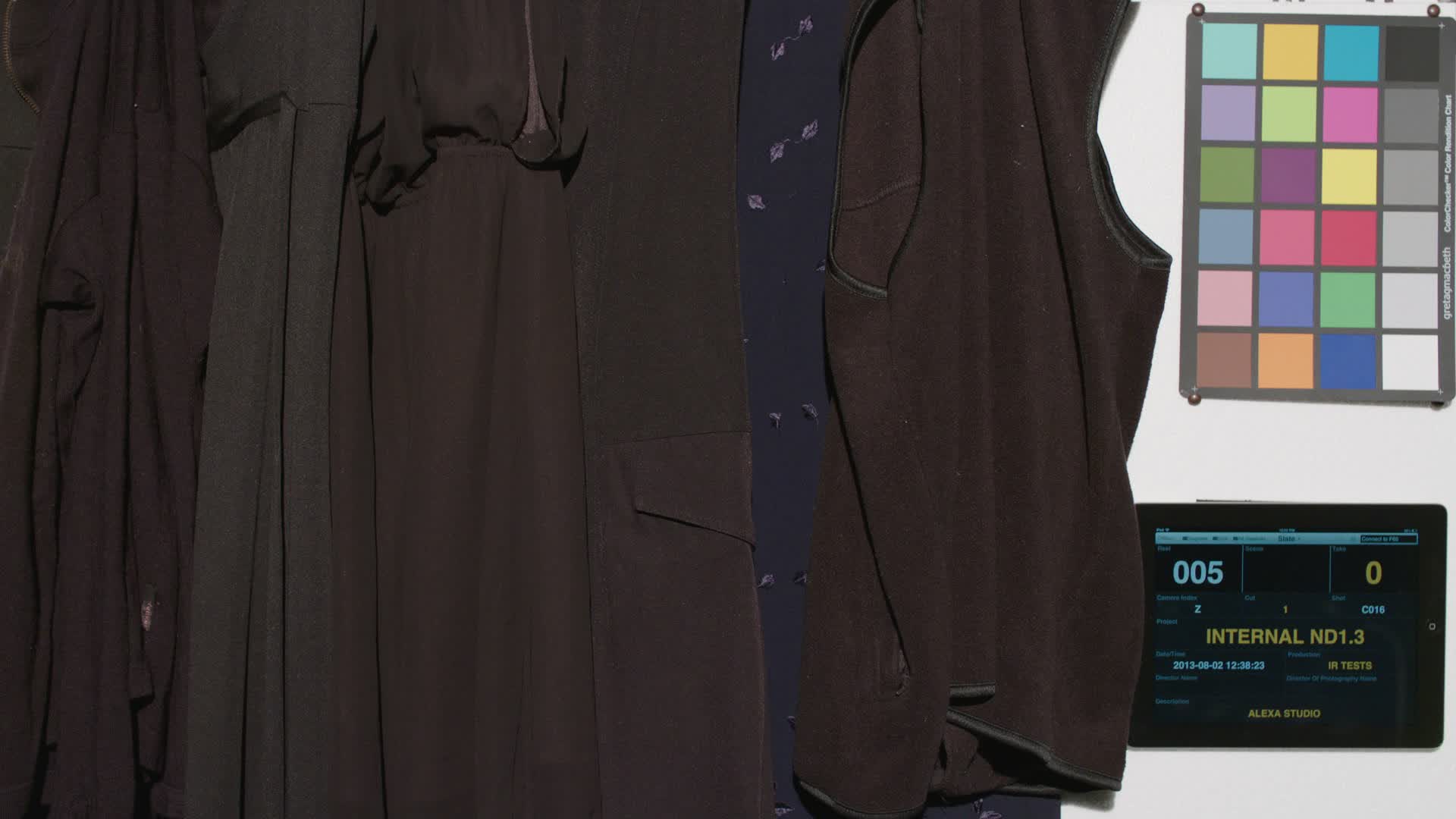
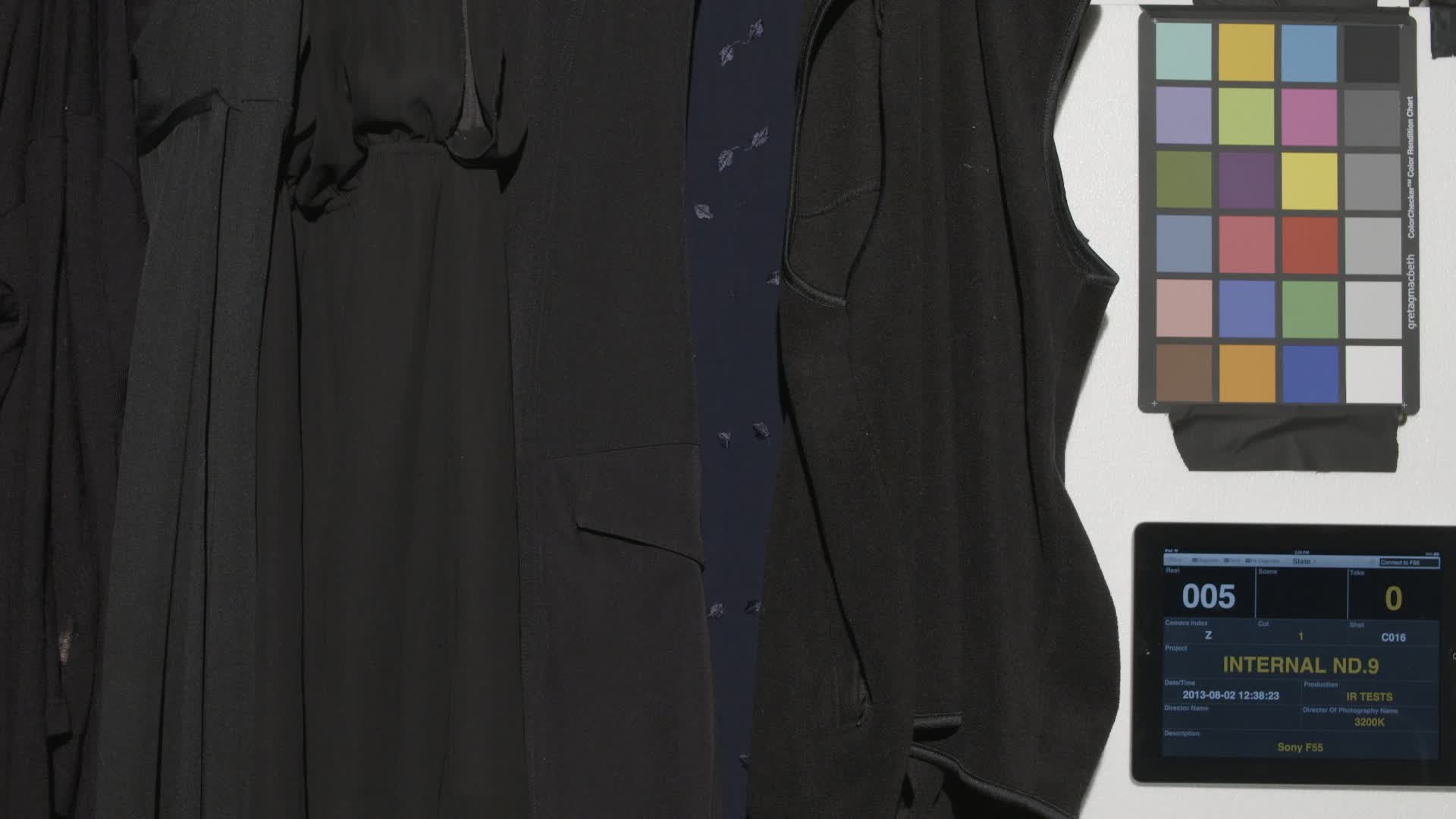
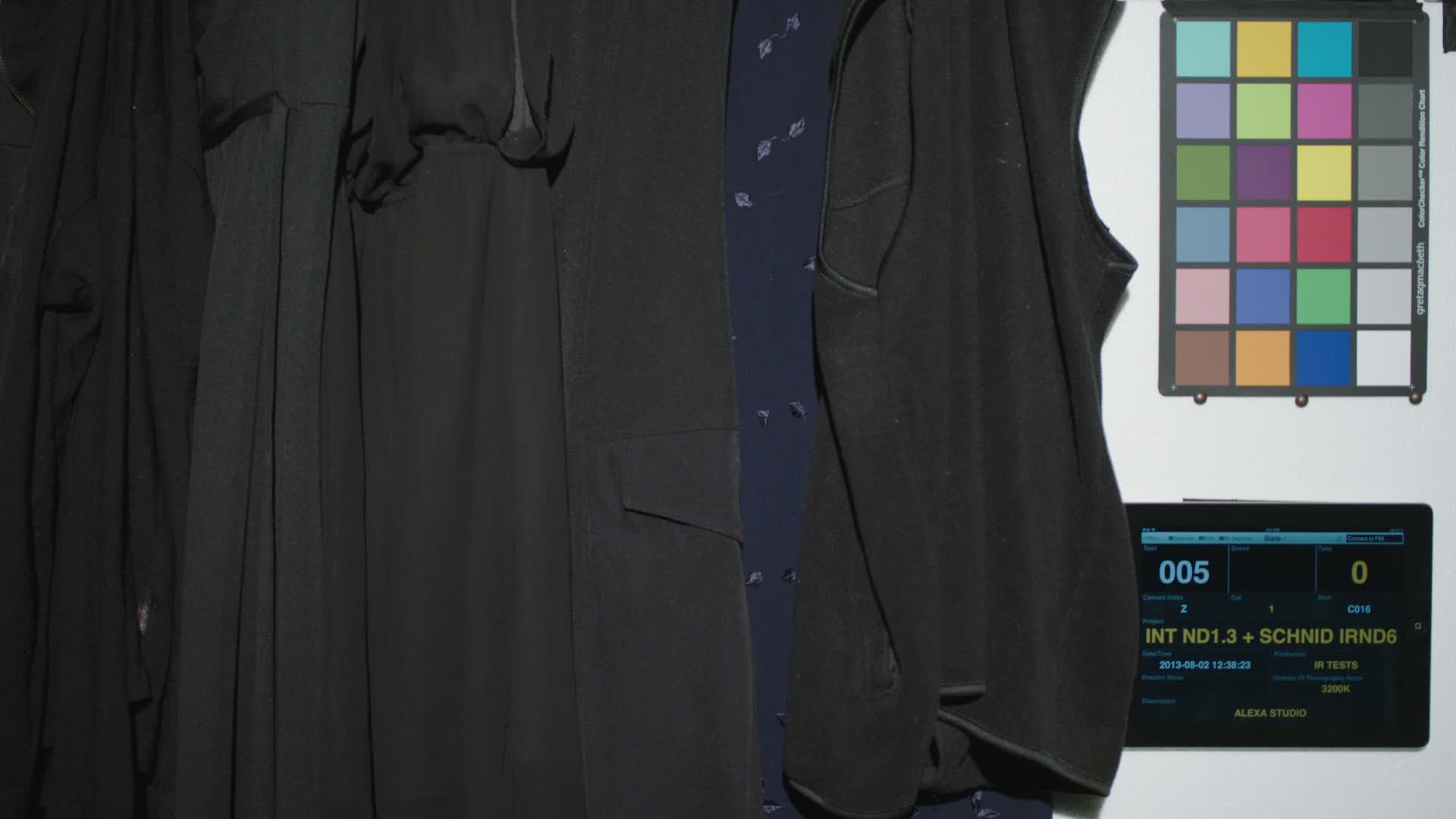
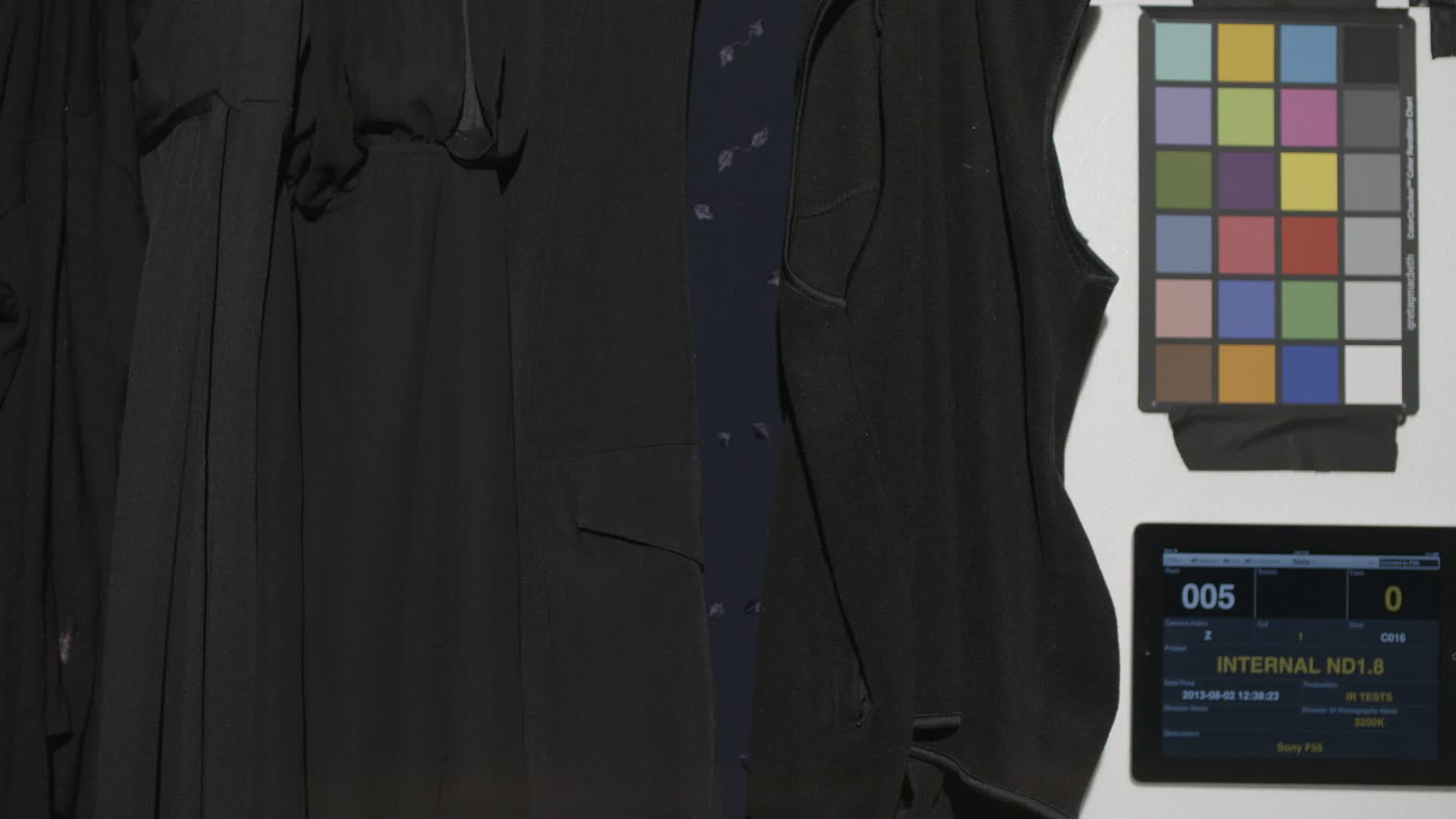
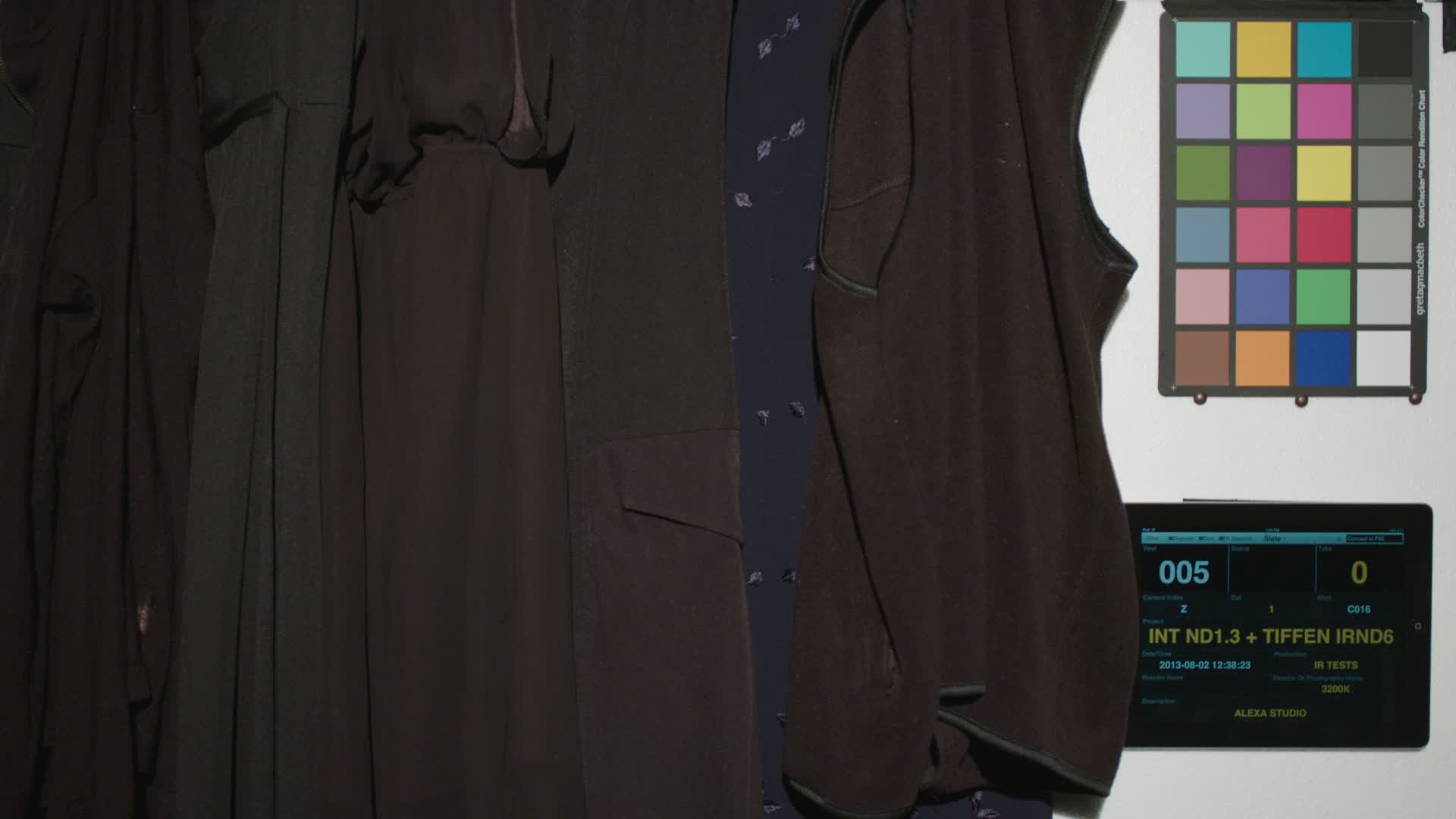

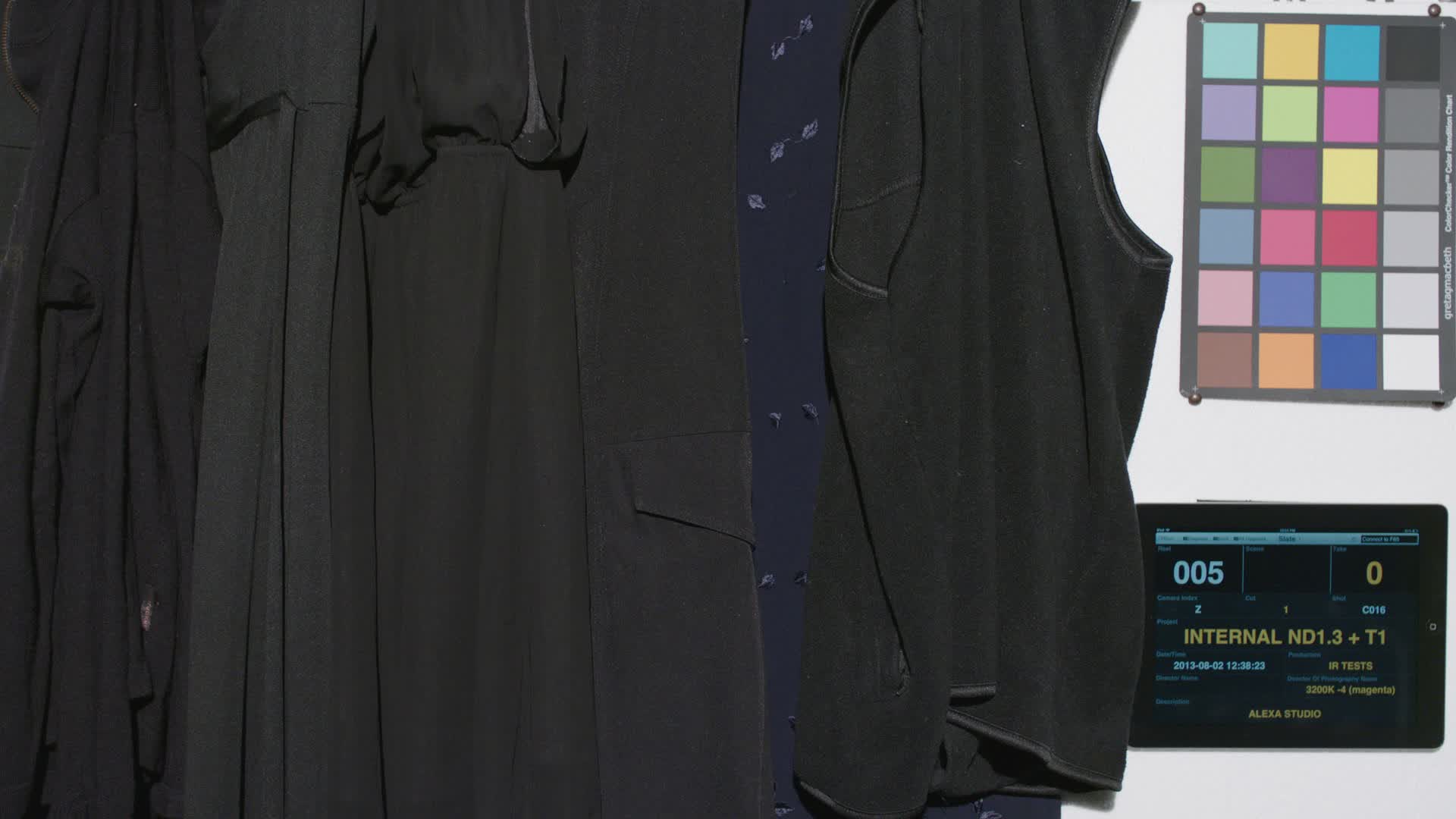
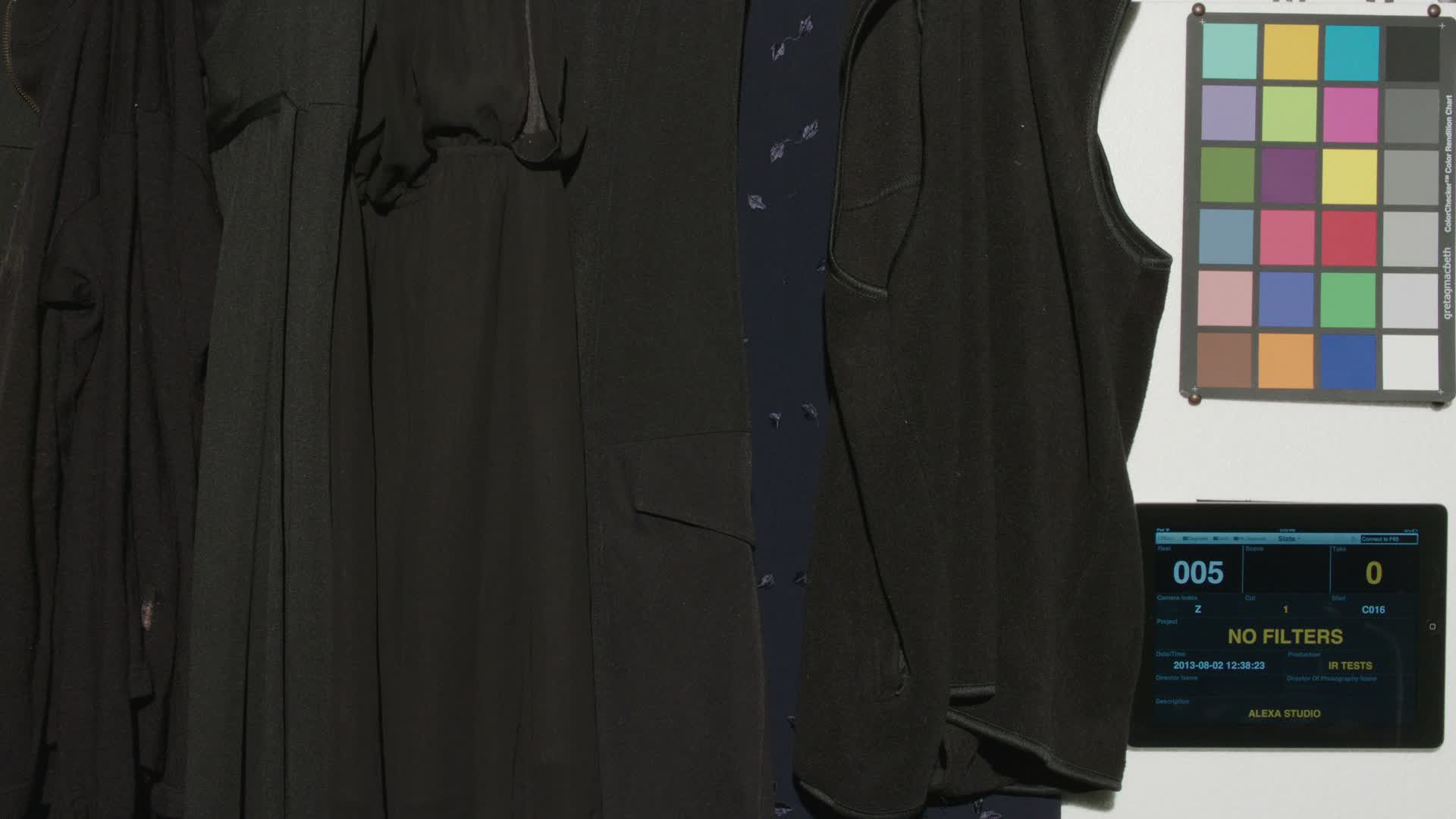
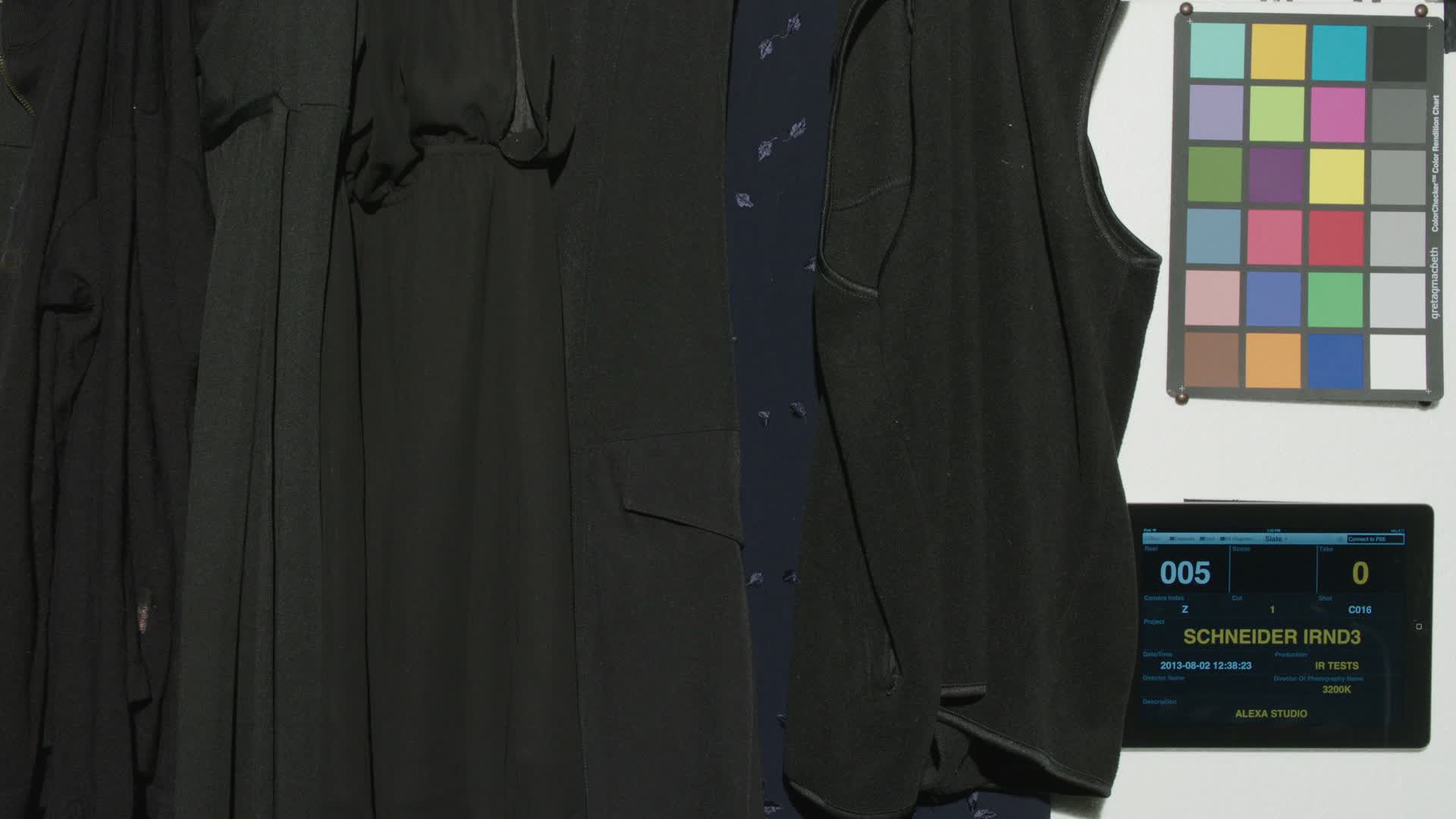

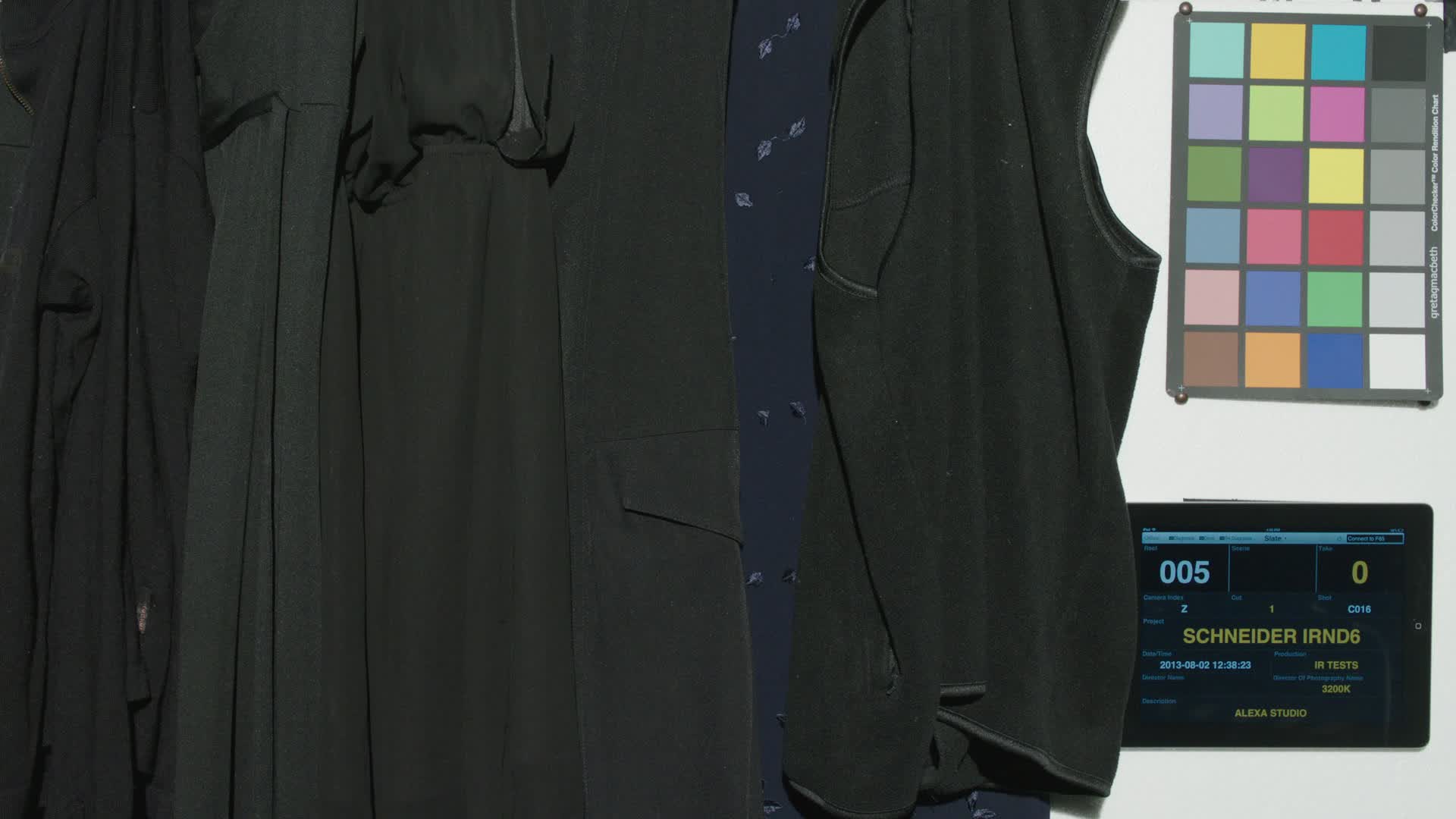

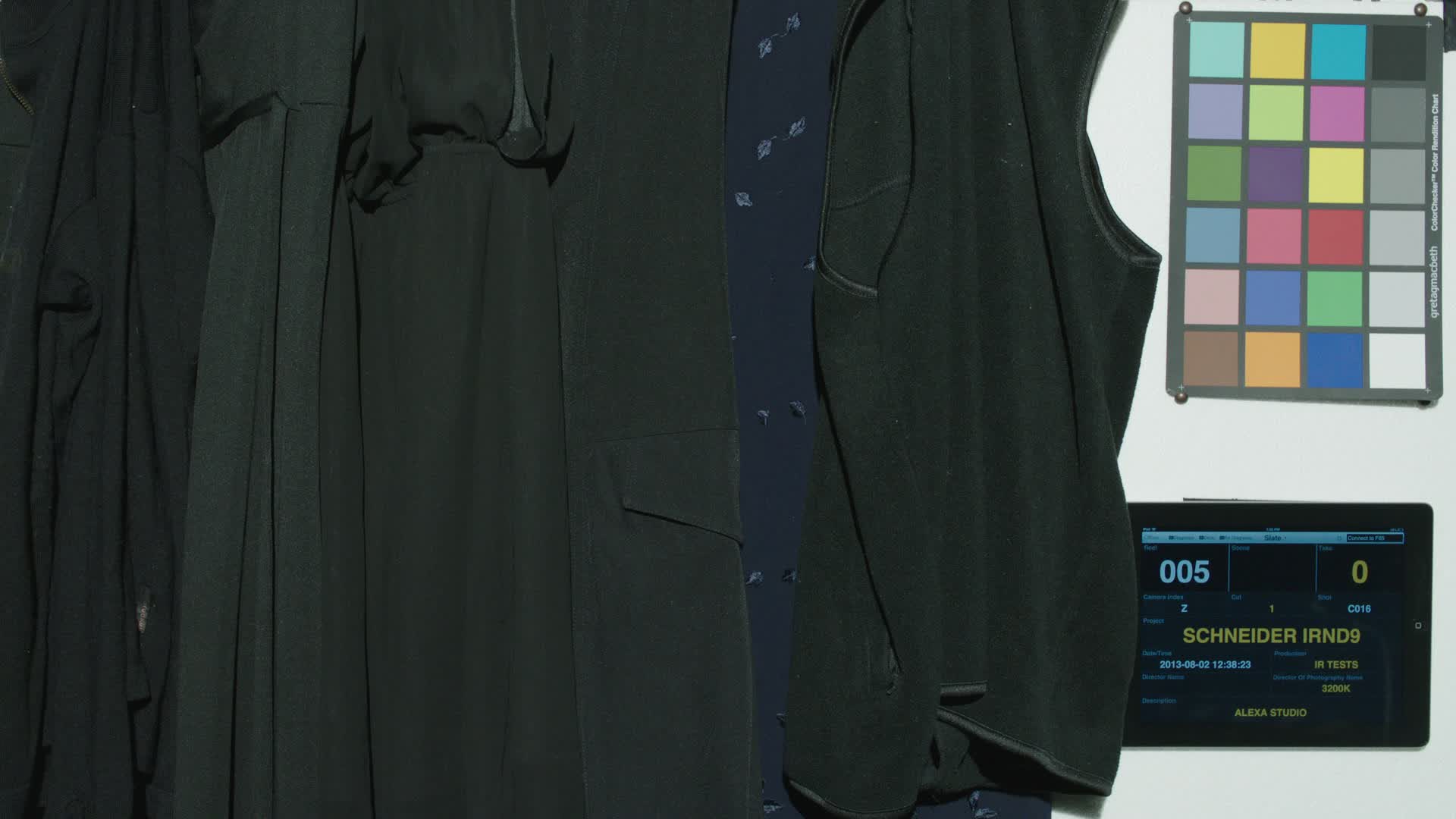

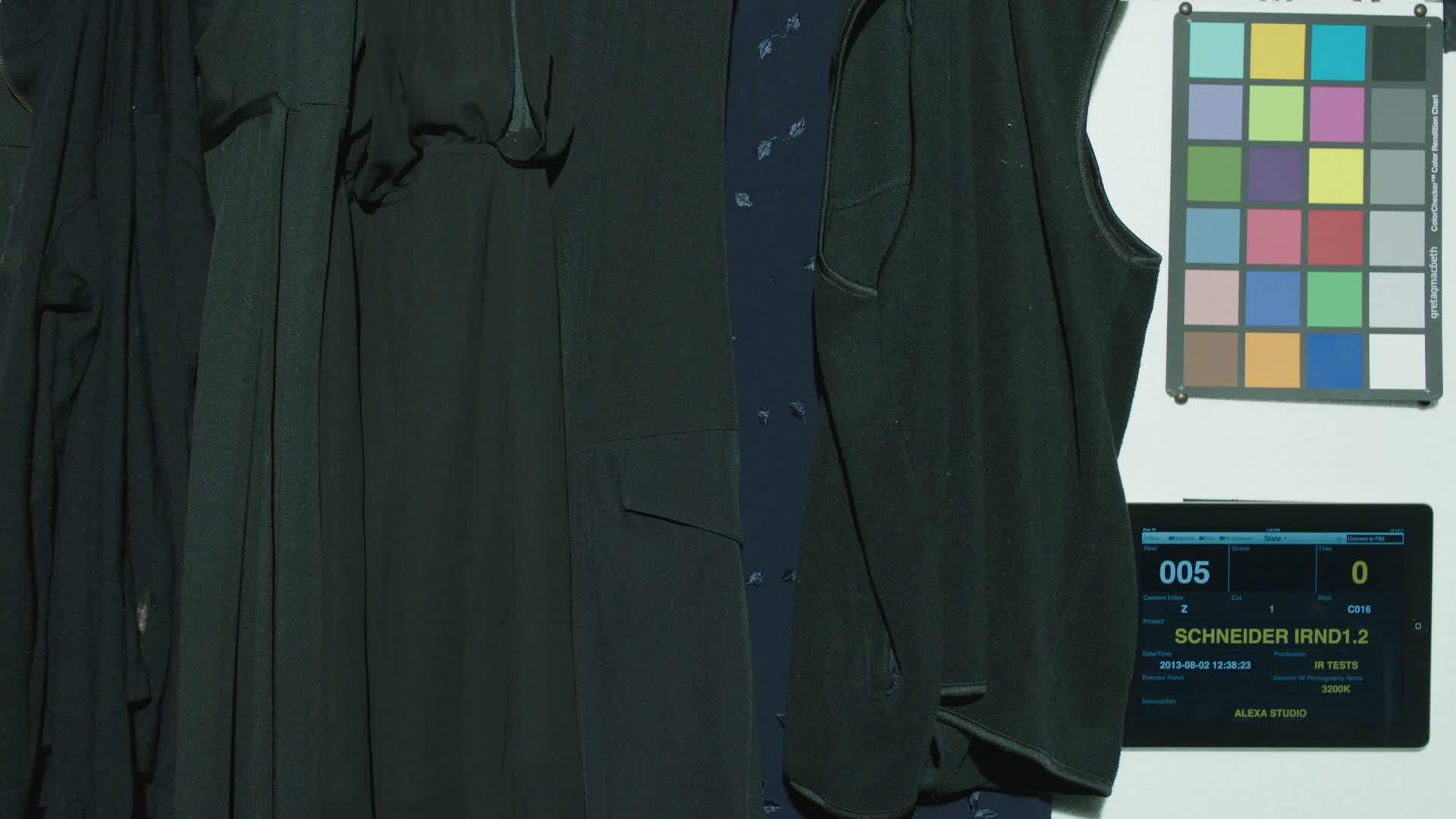

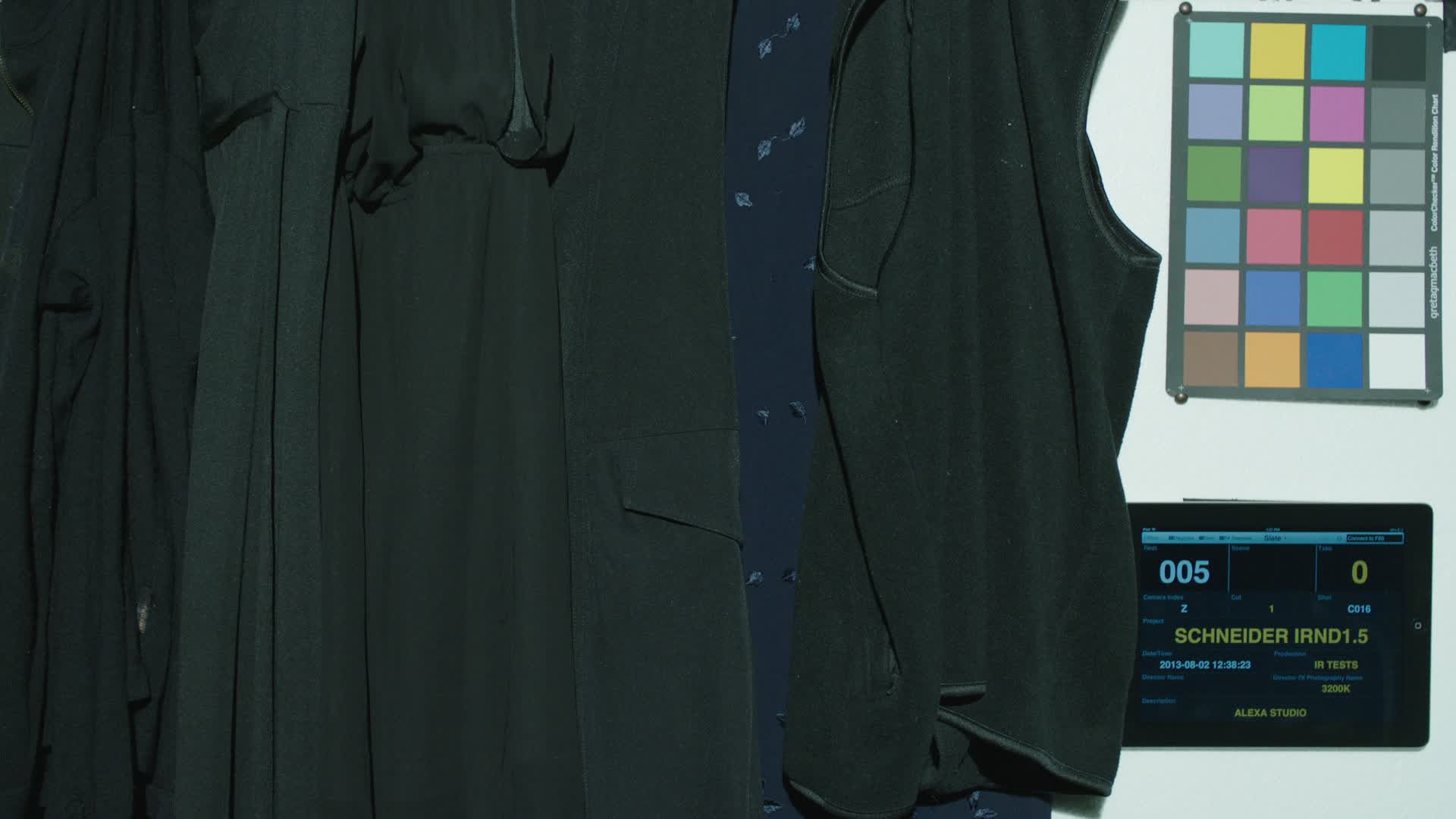

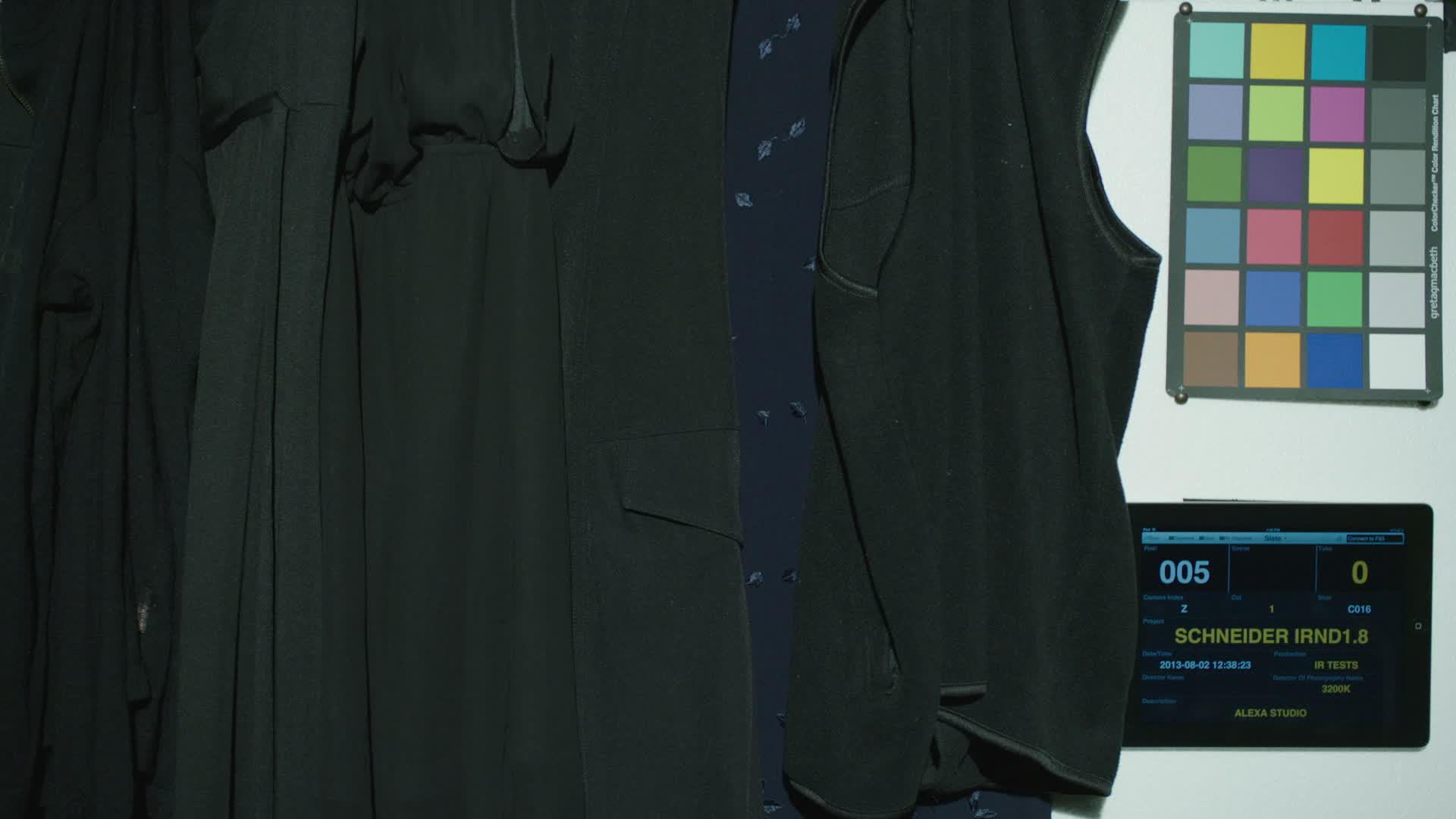

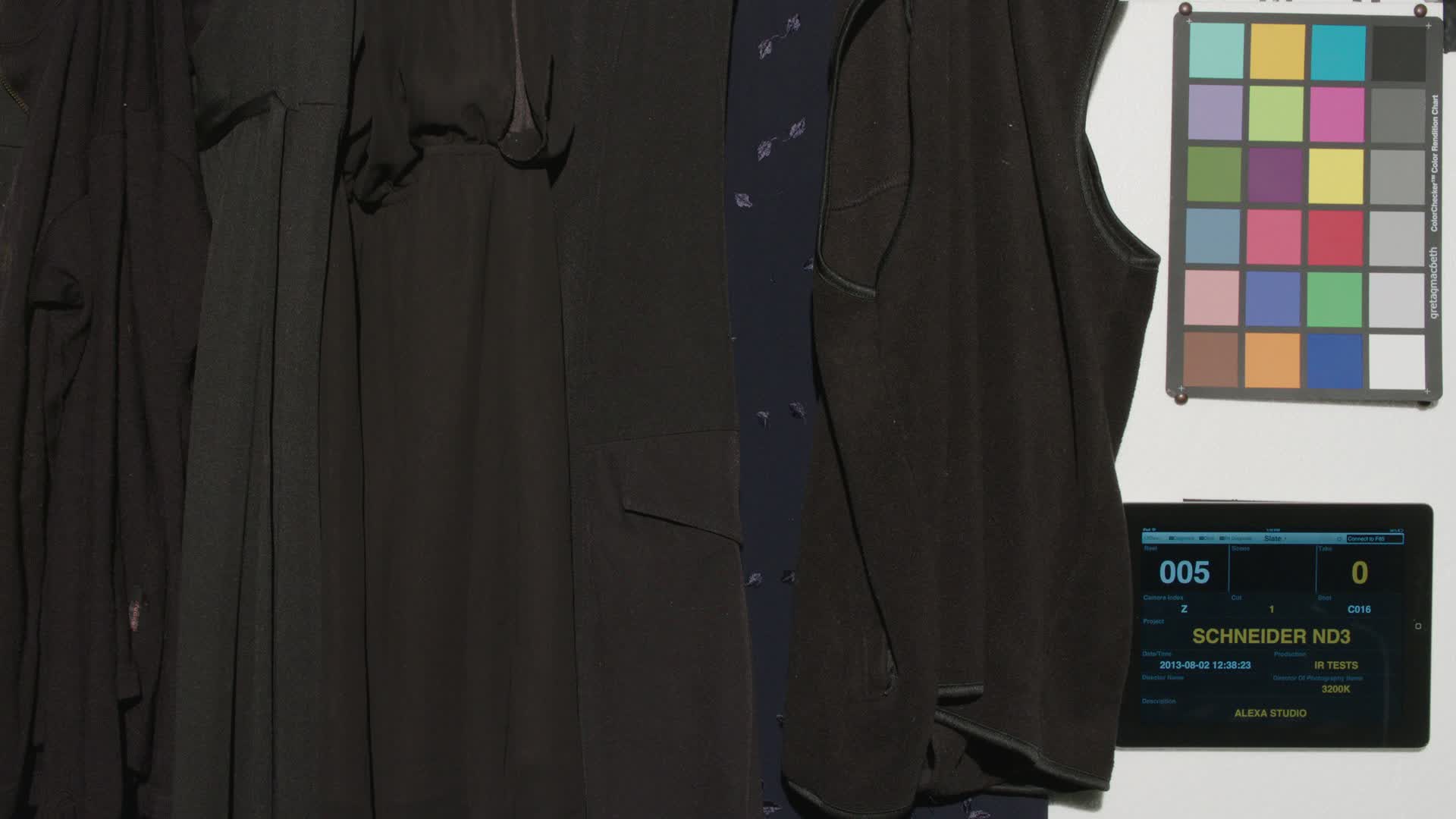

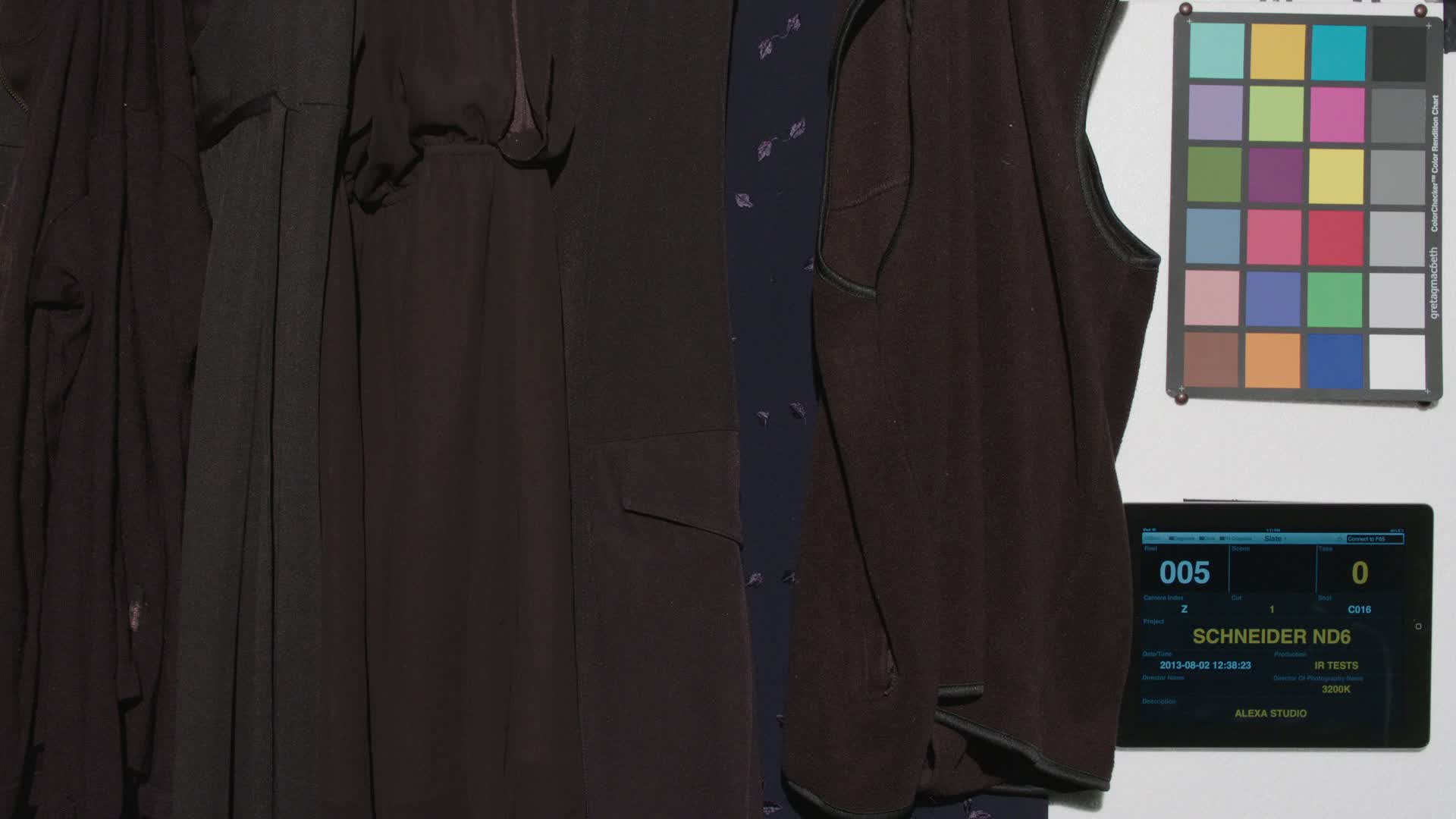


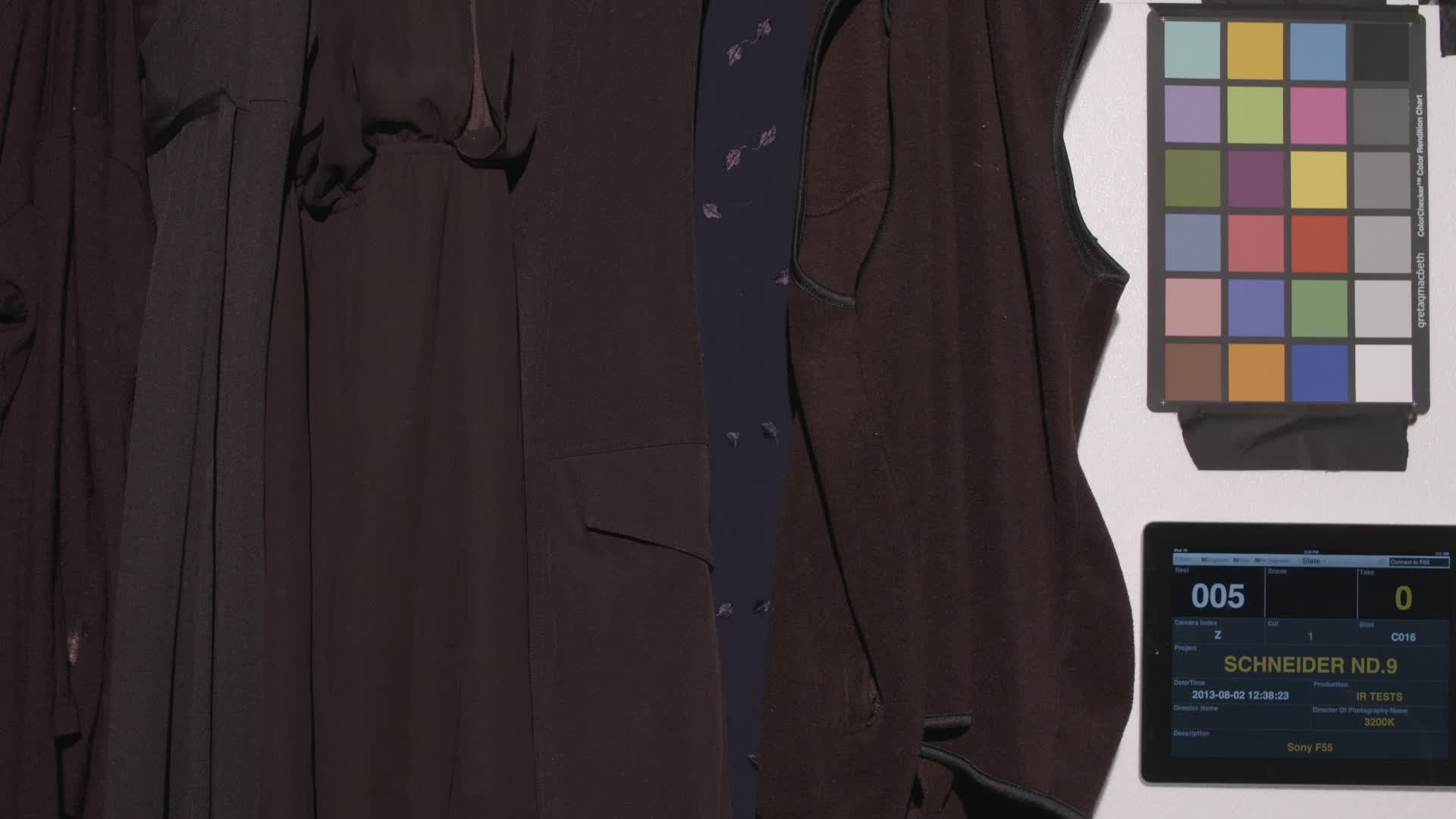
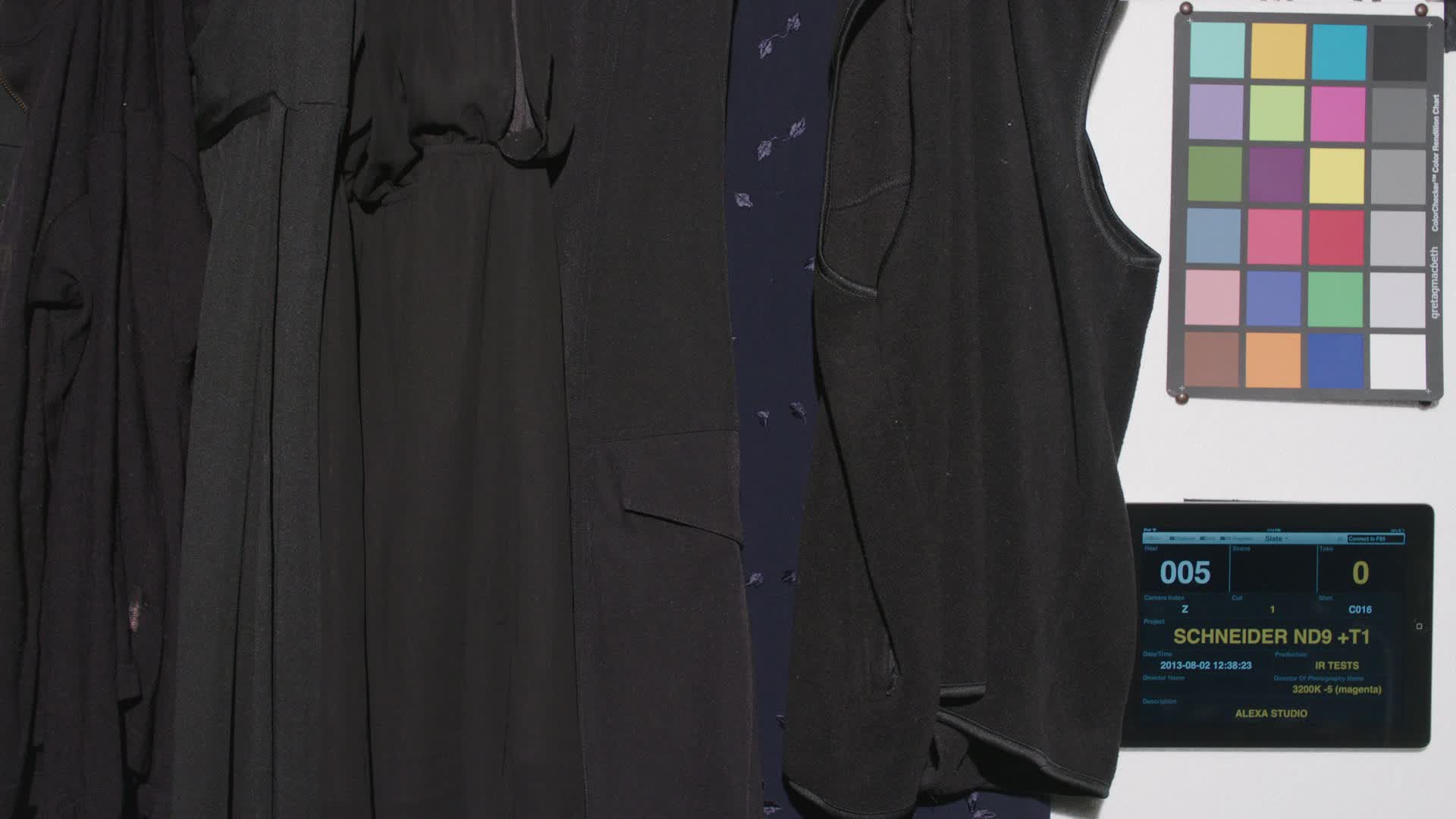
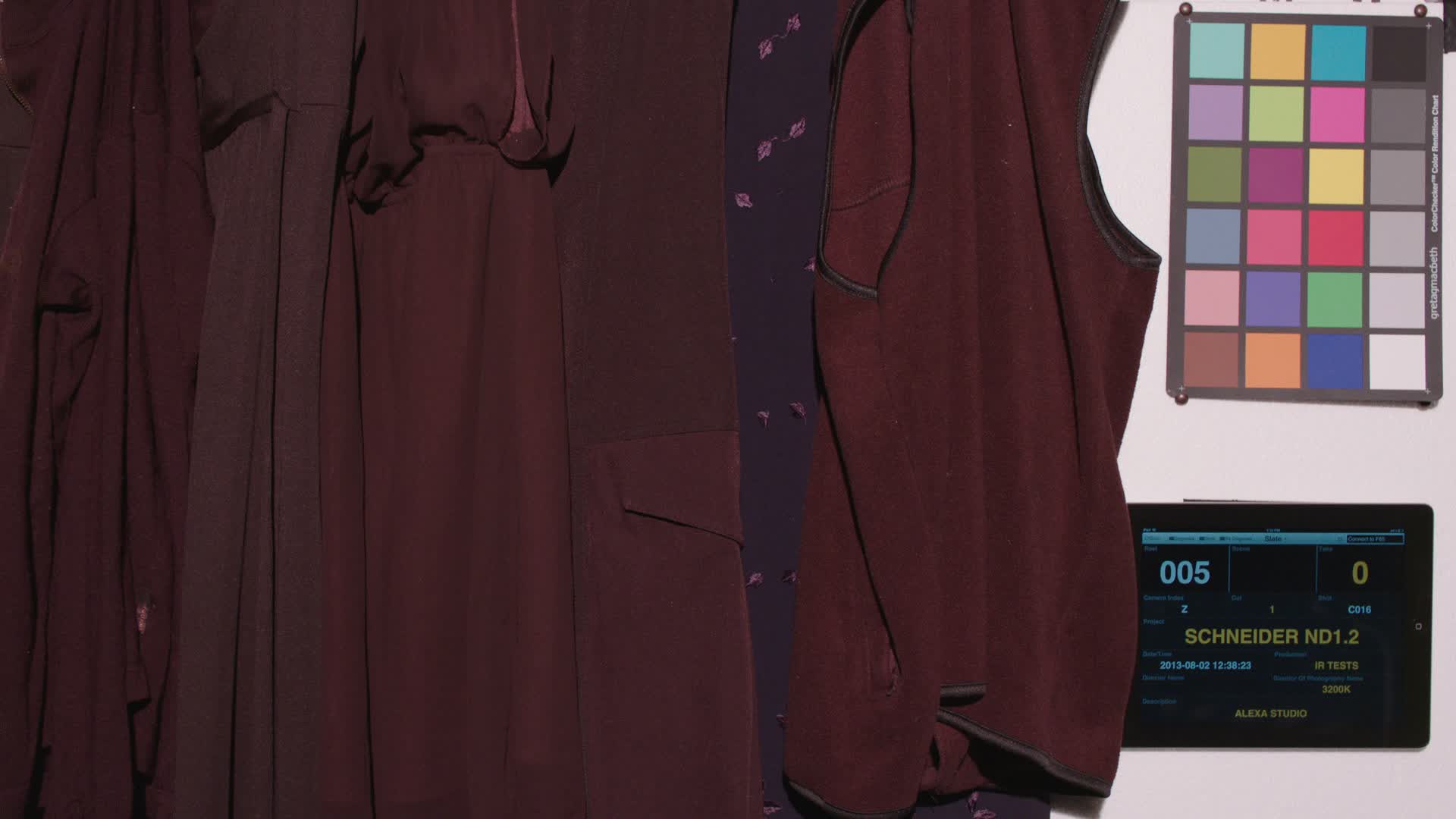

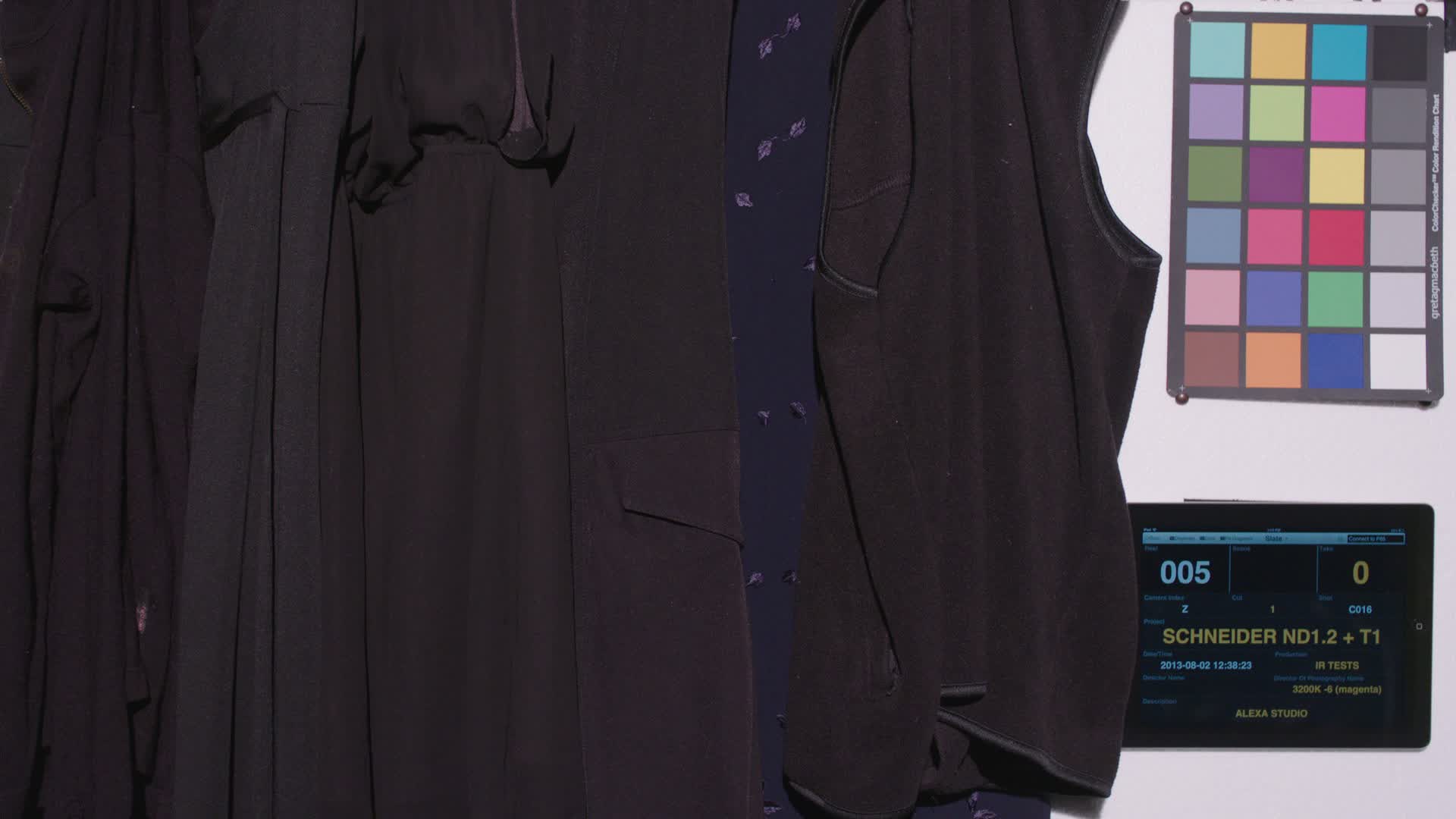

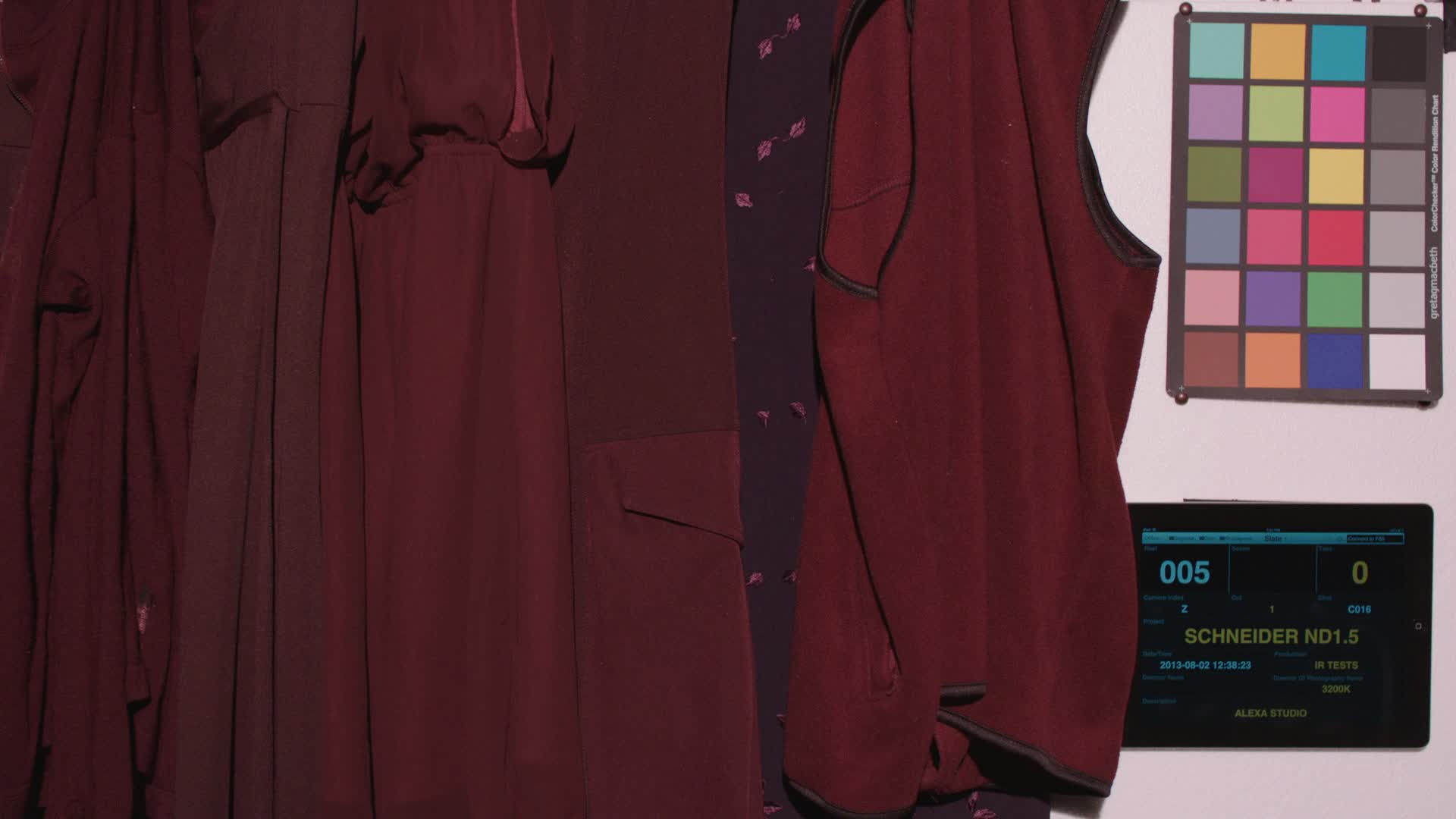

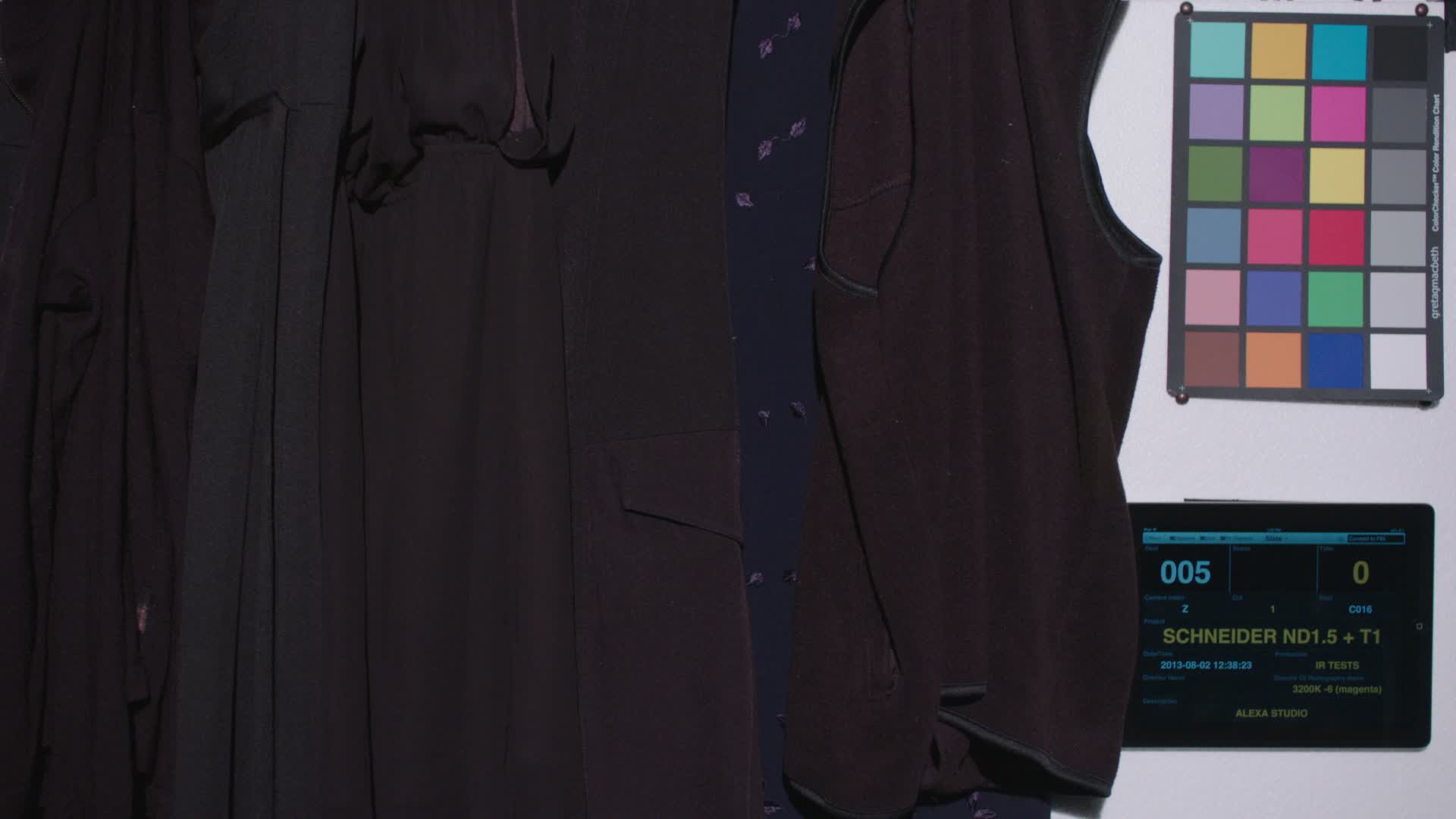

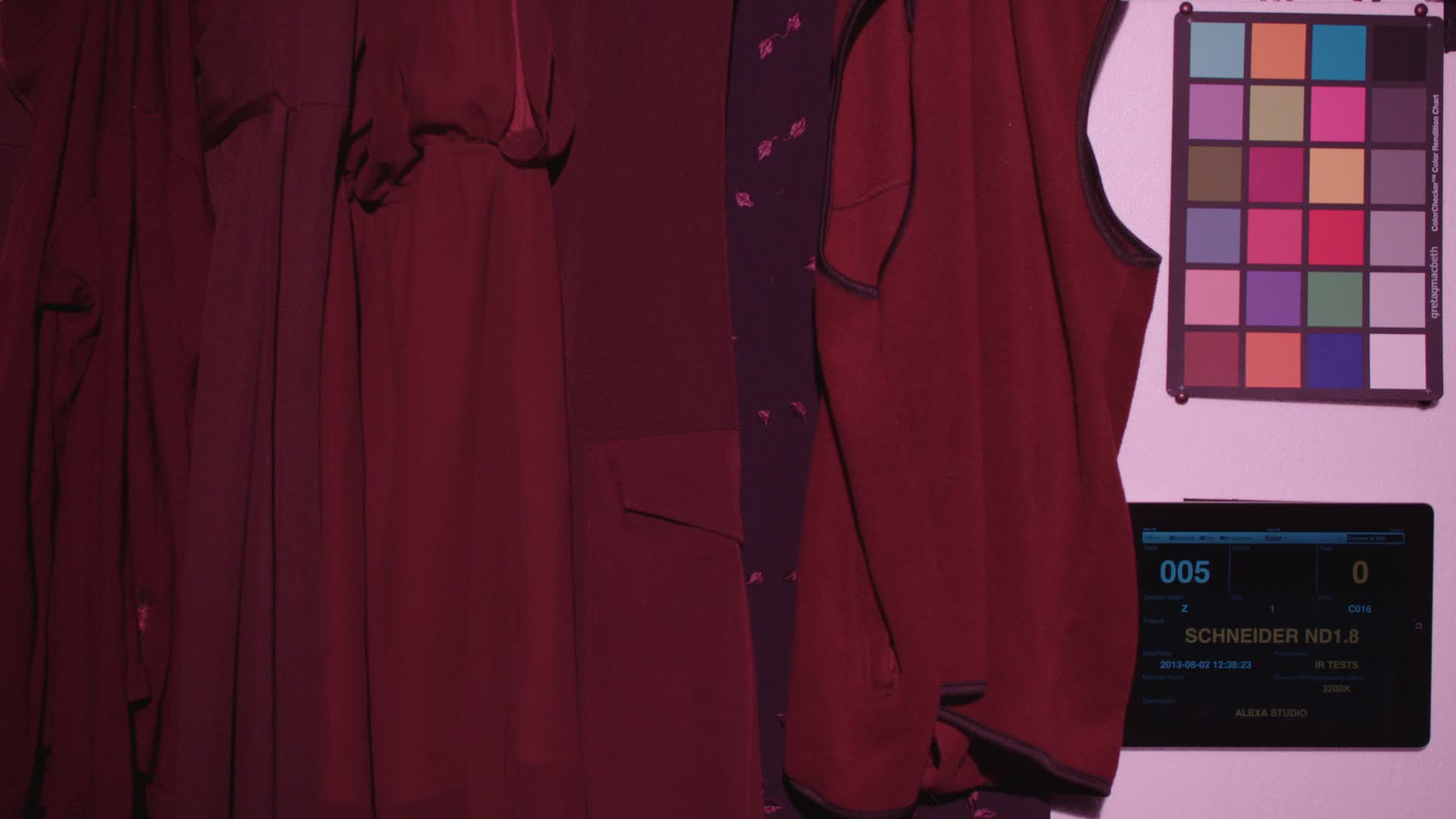

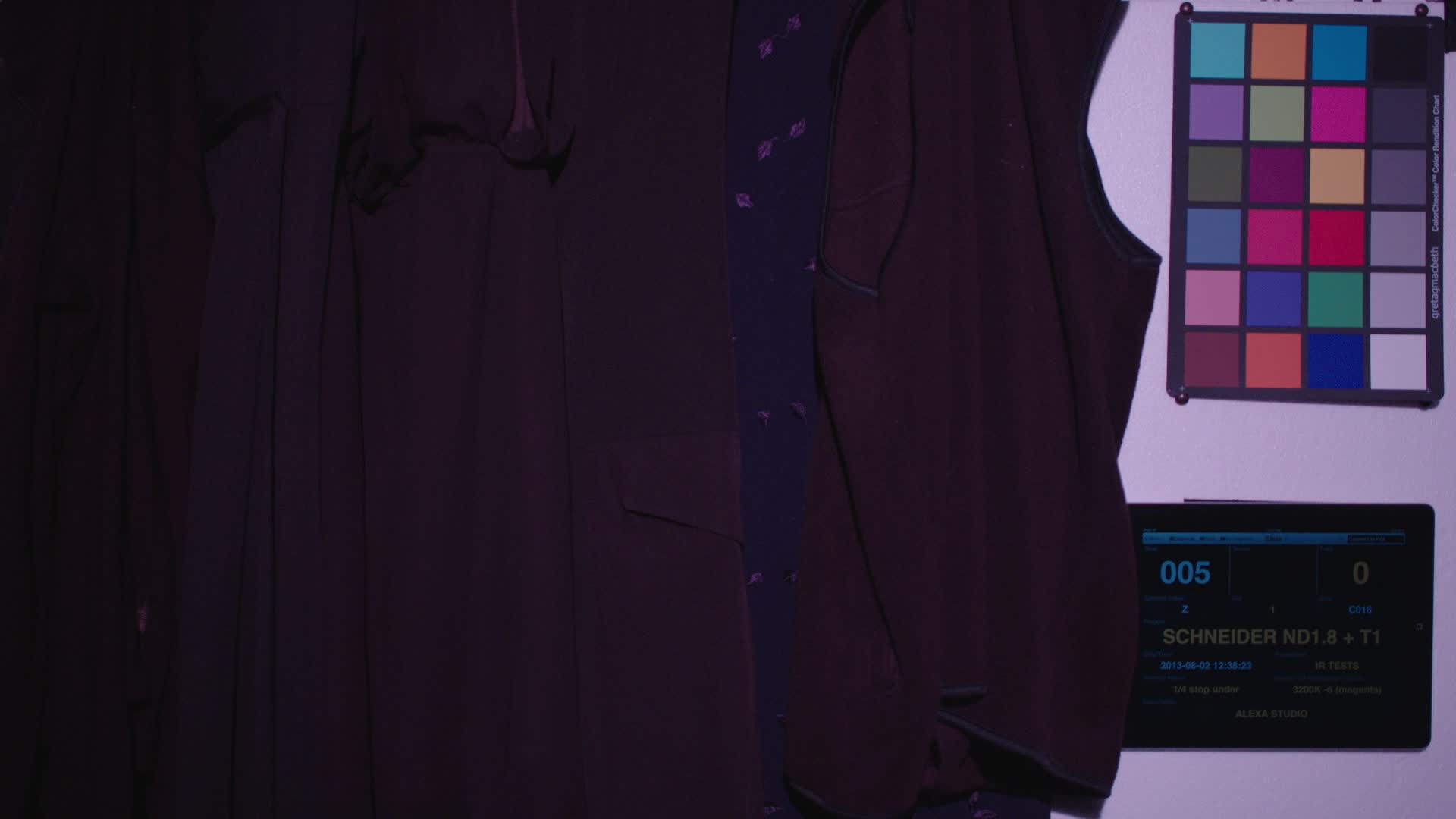
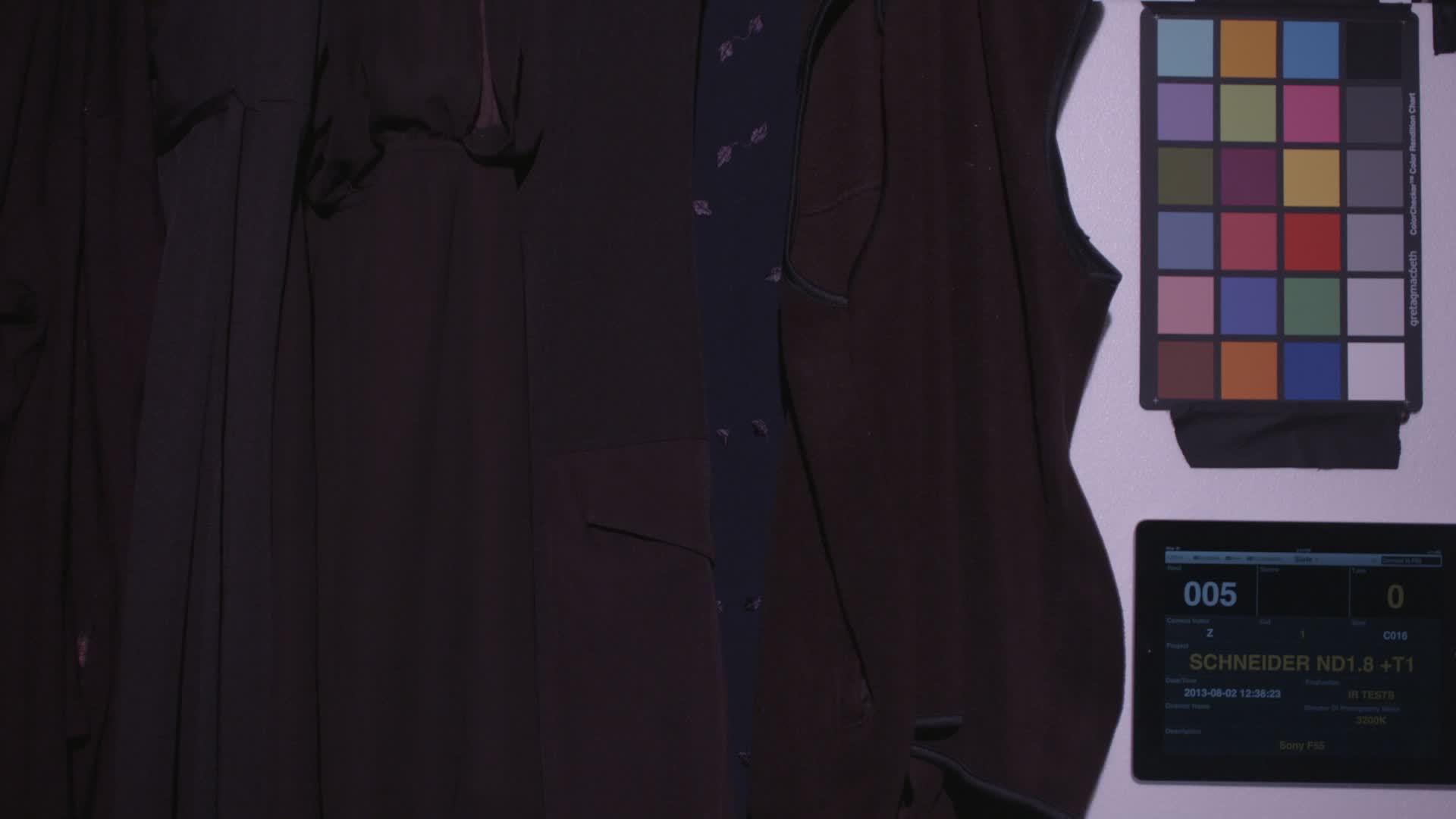

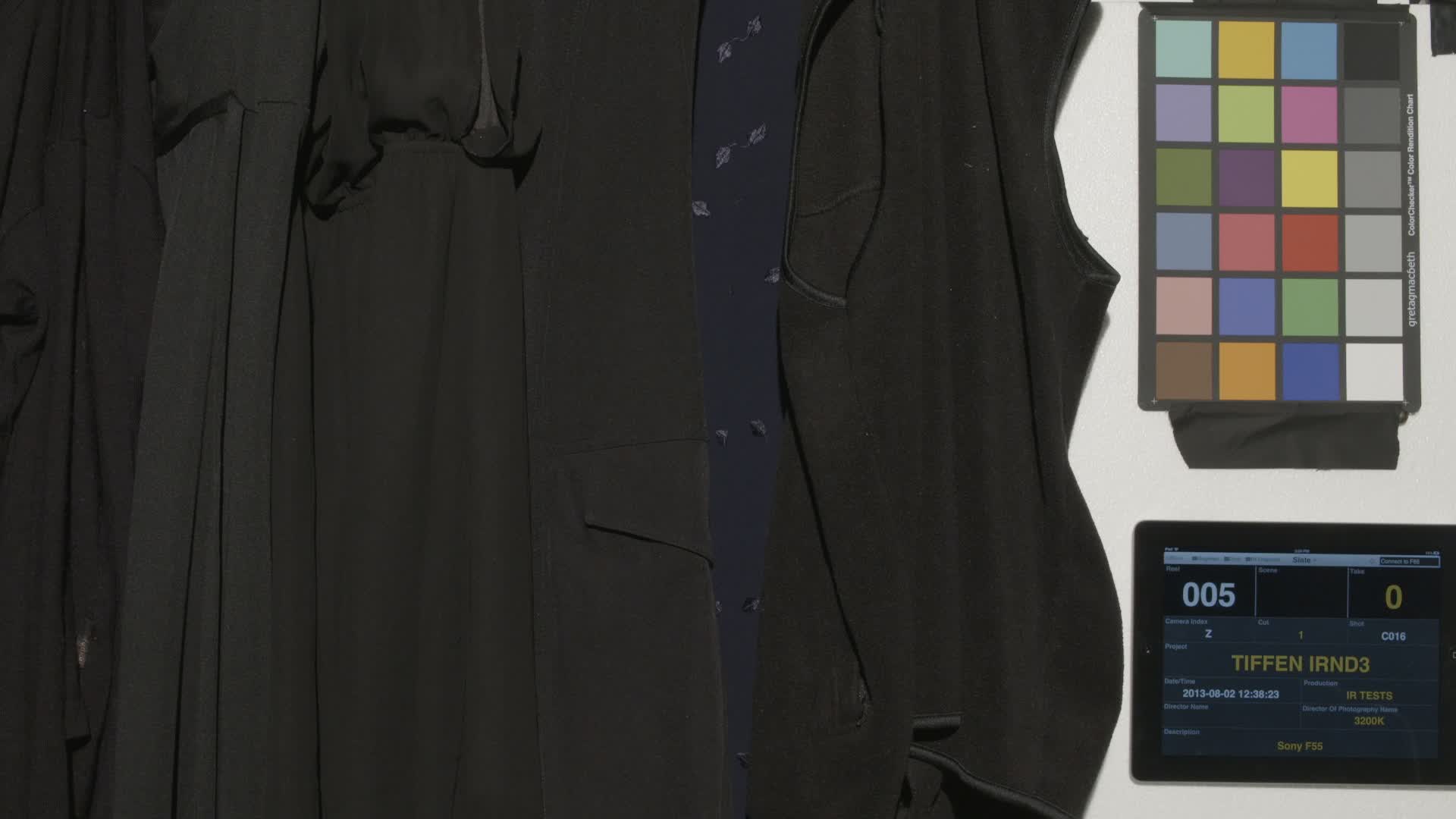
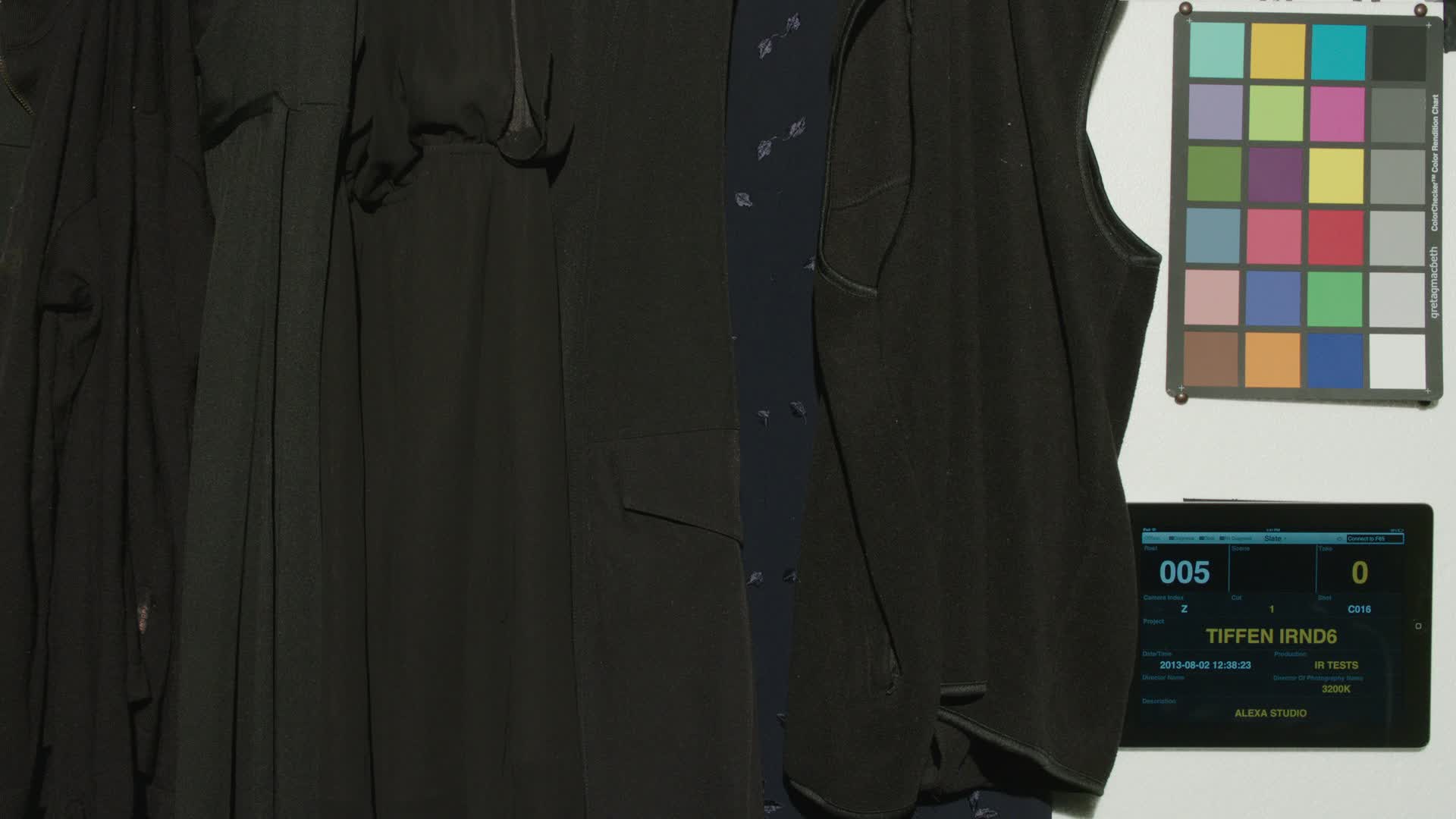


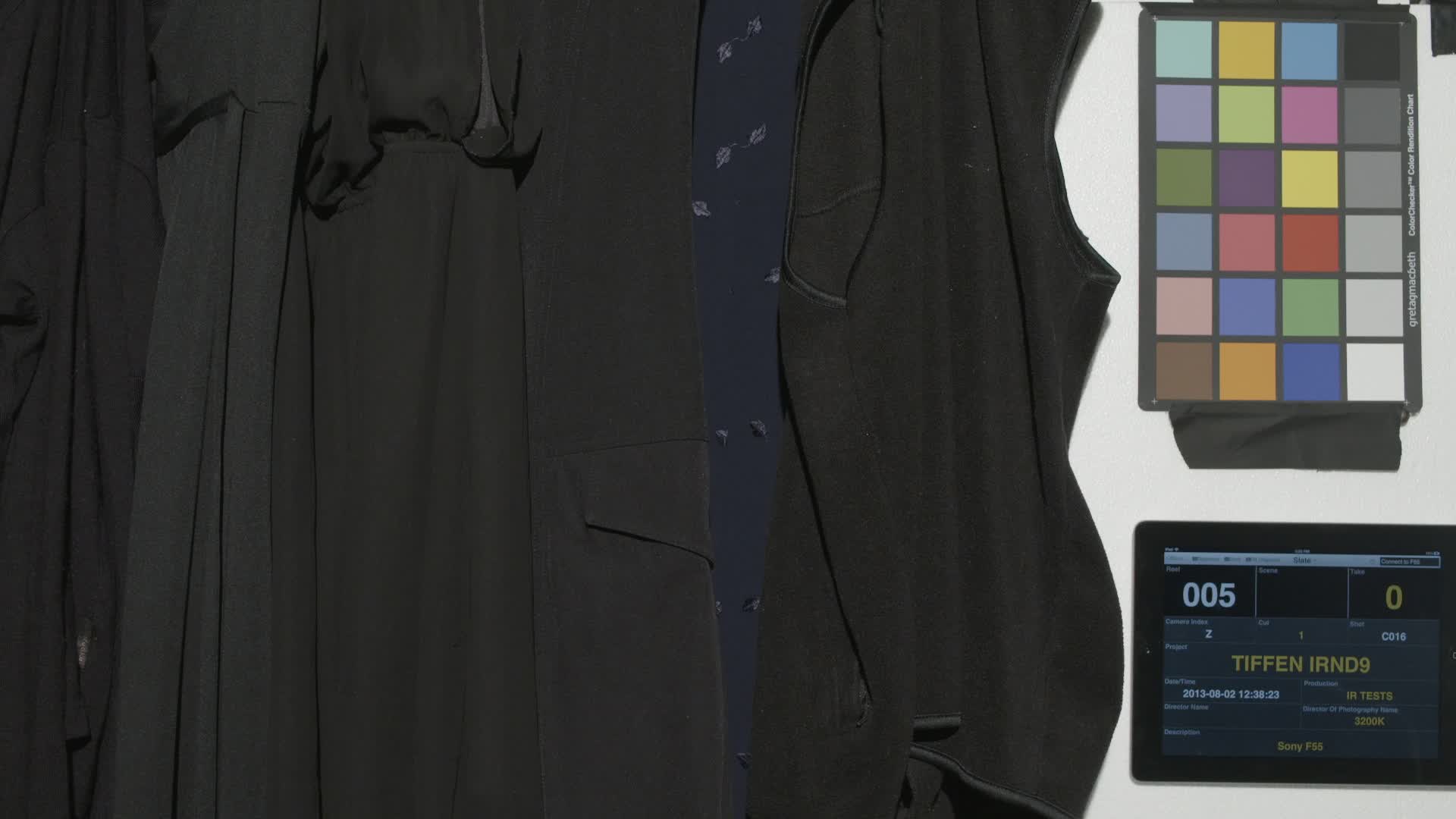
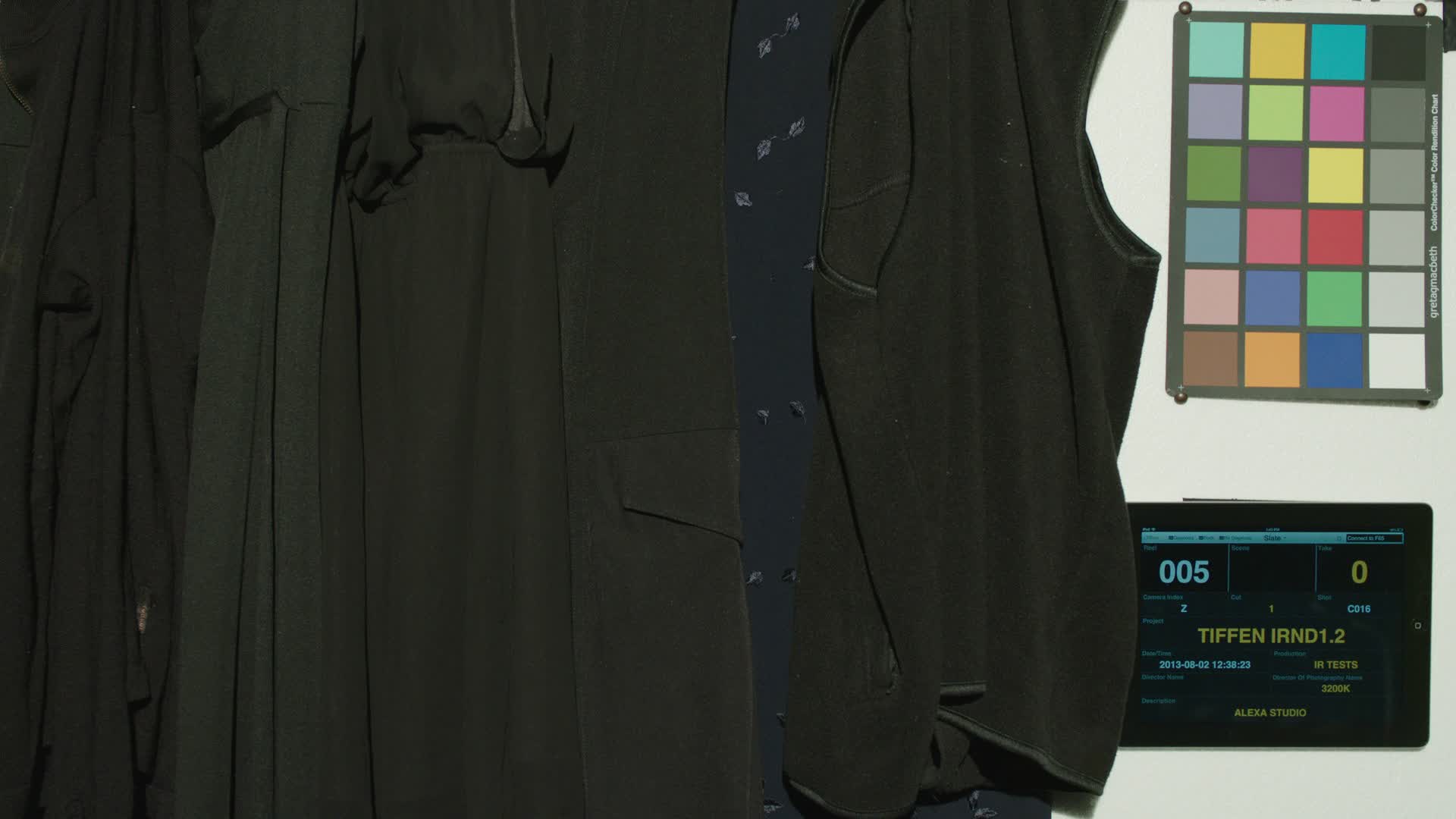

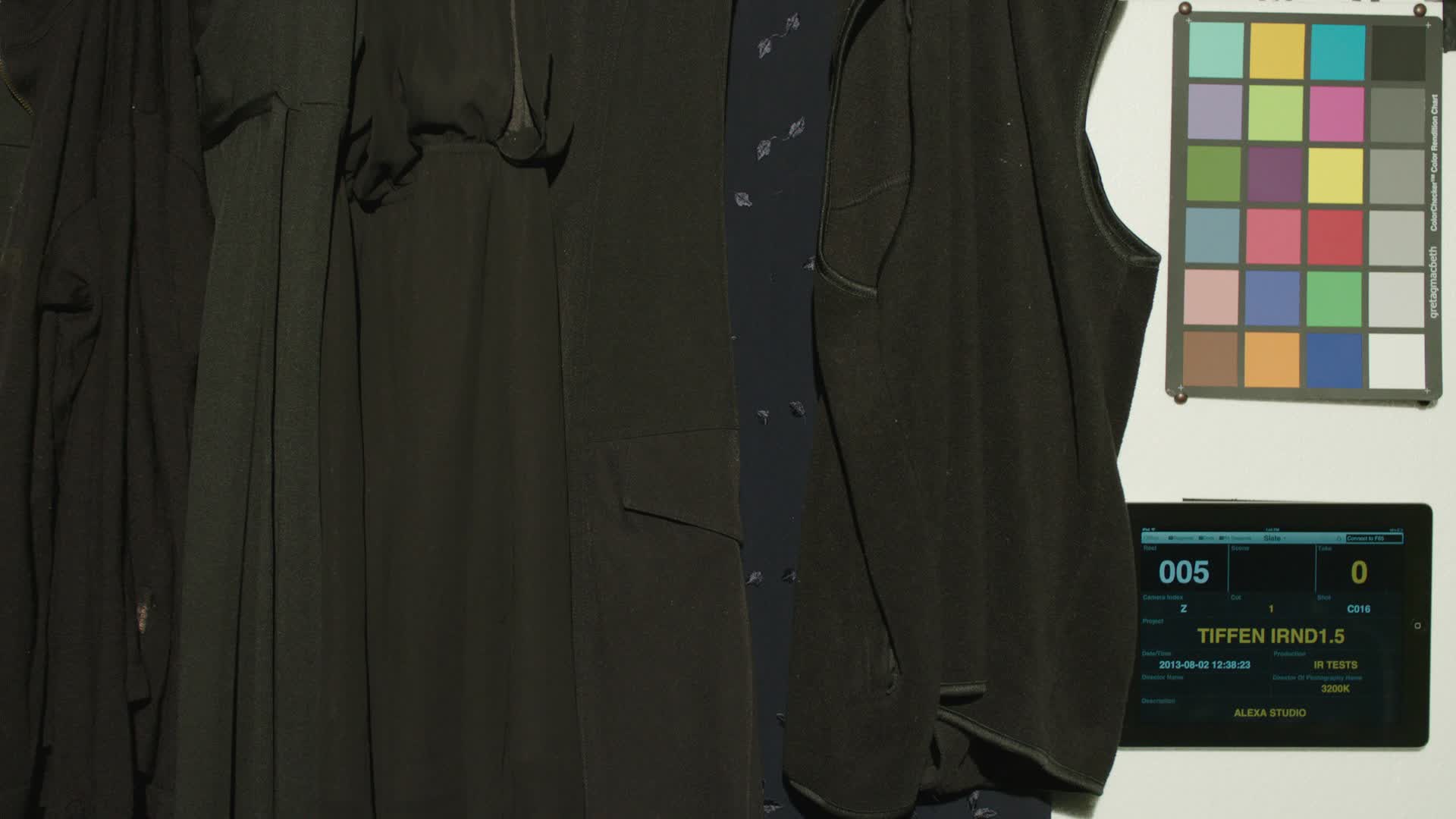

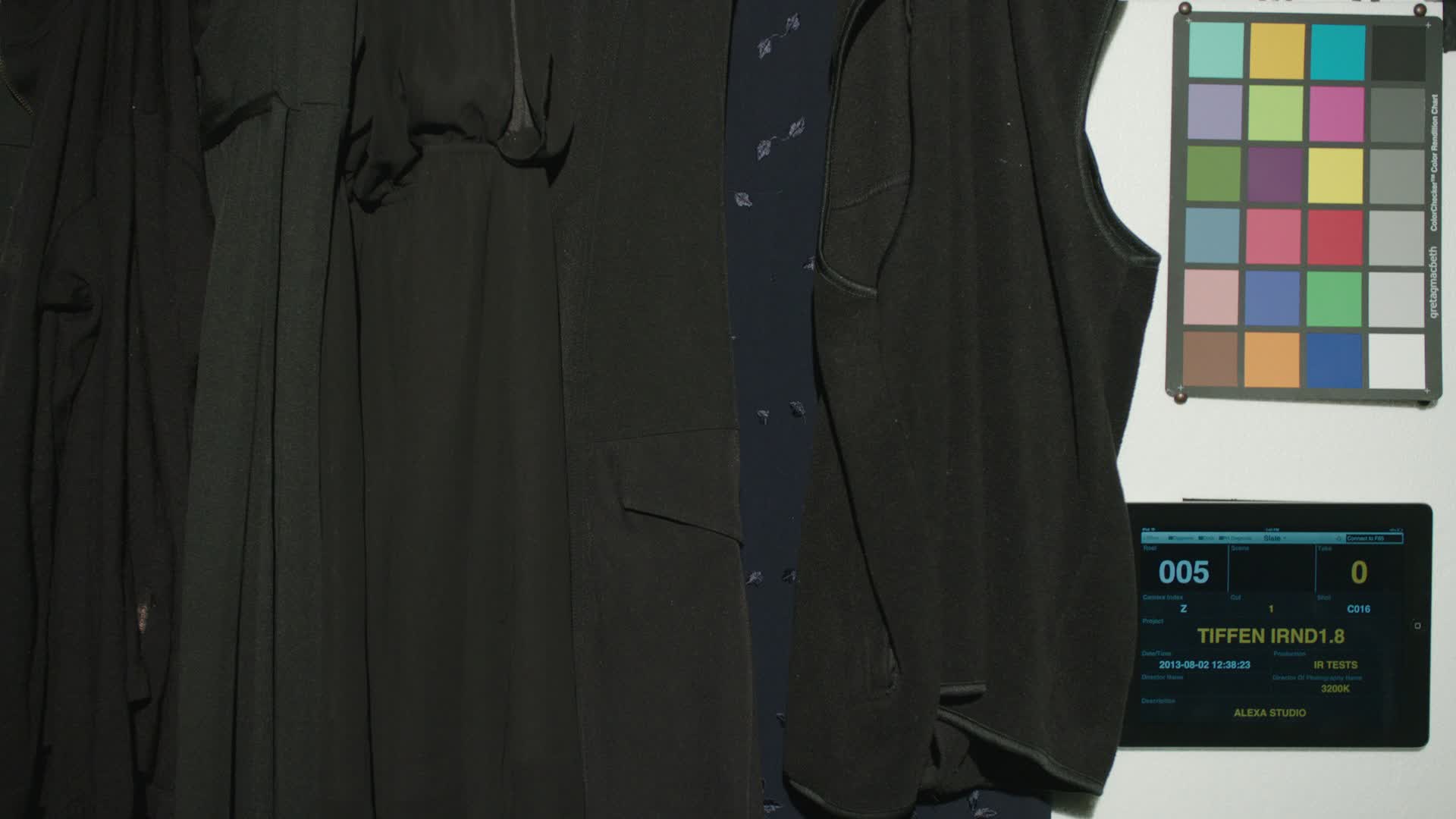


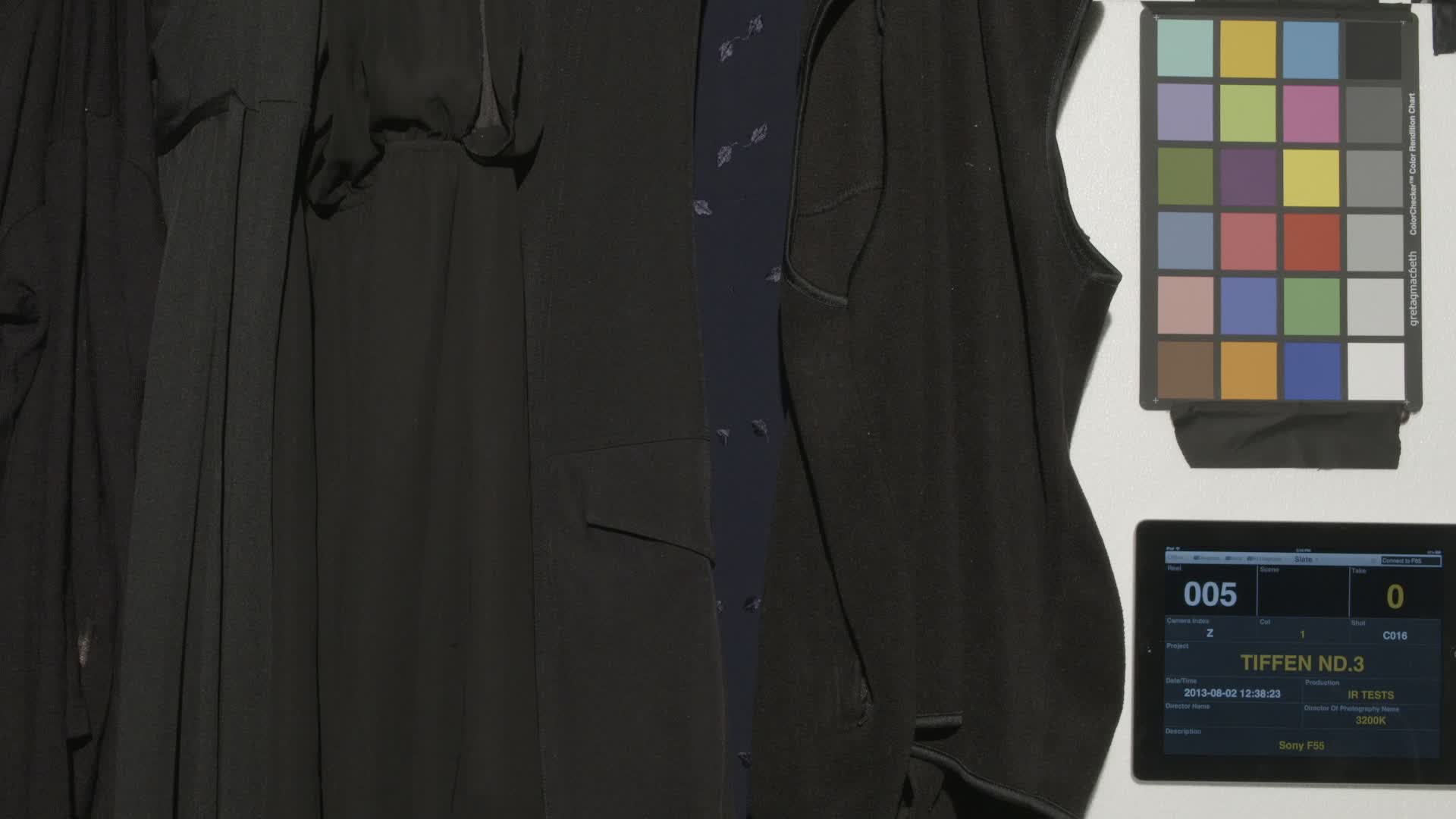
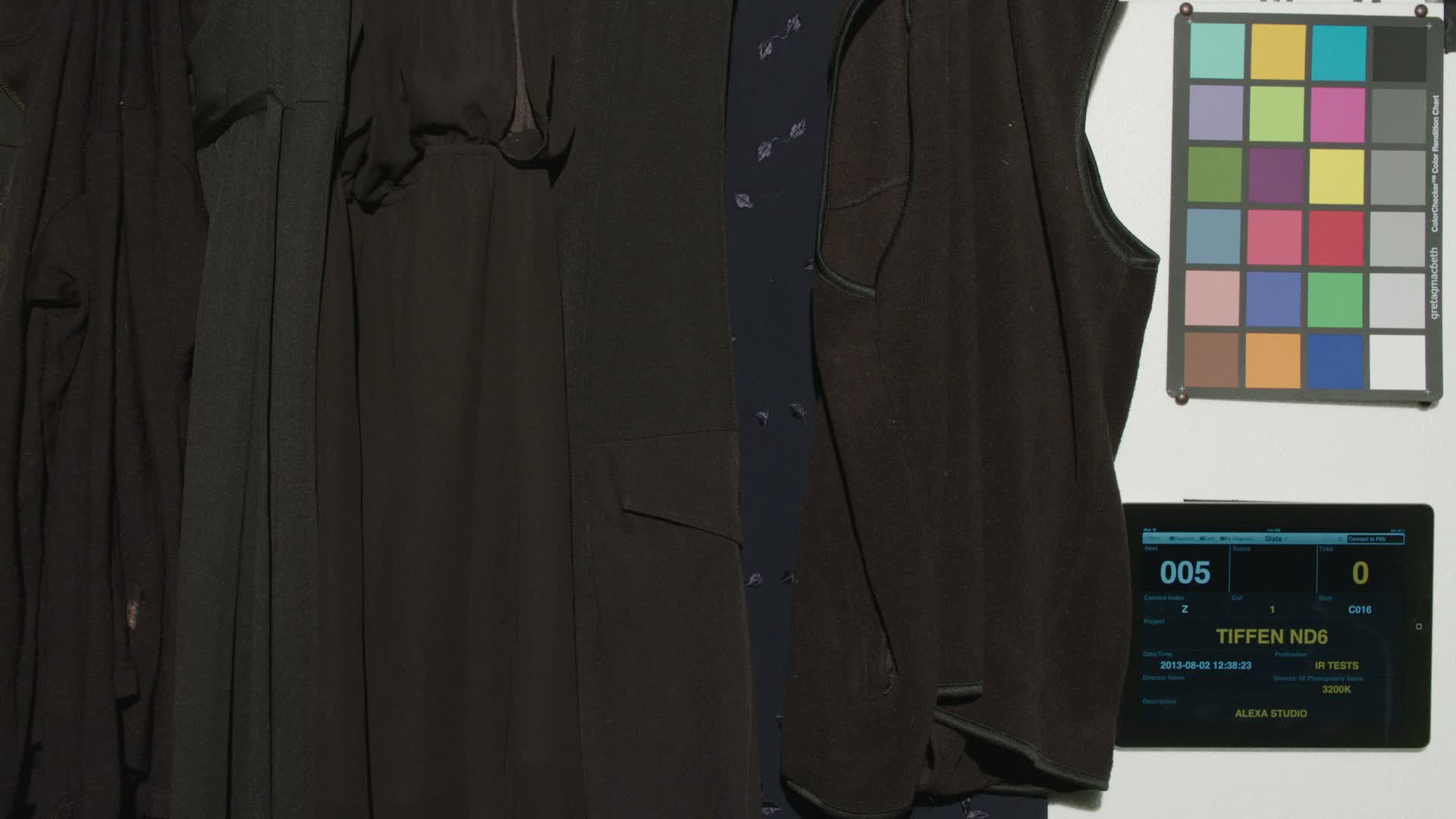

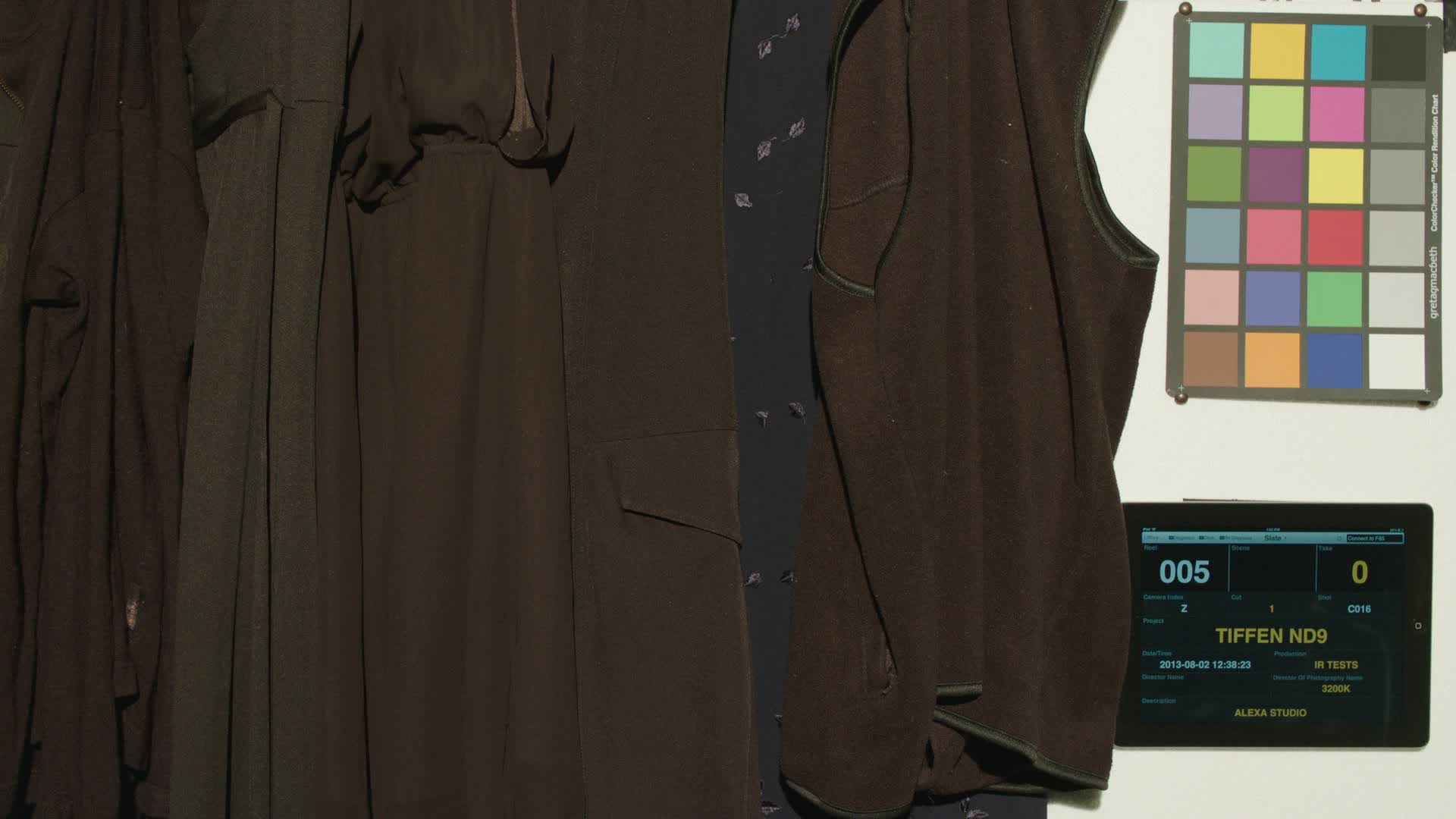

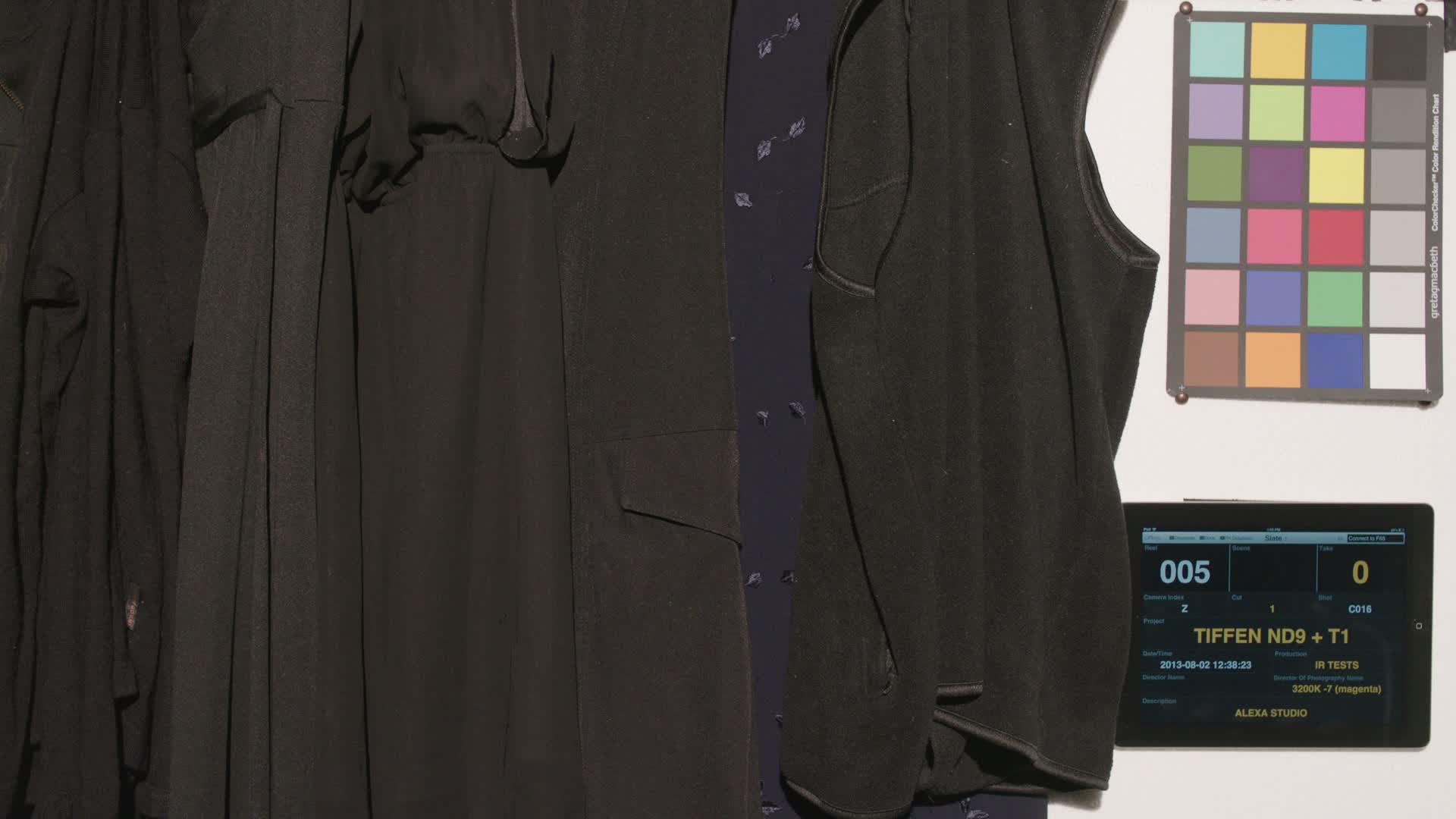
Copyright © CML. All rights reserved.
- aces.png
- aces.png
- aces.png
- aces.png
- 24-7.jpg
- 24-7.jpg
- arri.png
- arri.png
- BandH.jpg
- camalot.png
- camalot.png
- dedo.png
- dsc.png
- dsc.png
- kino.png
- Hawk.png
- JustCinemaGear.jpg
- Leitz_logo.png
- Leitz_logo.png
- Lowing.gif
- Module8Logo.png
- GodoxLogo.png
- Nanlux.png
- NPV_new_logo-(3)-(002).png
- NMBLogoForCML.png
- lindseyo.jpg
- Aputure.png
- TC Logo Centered K_2.png
- VMI.png
- zeiss-logo.png
- zeiss-logo.png
- aces.png
- aces.png
- aces.png
- aces.png
- 24-7.jpg
- 24-7.jpg
- arri.png
- arri.png
- BandH.jpg
- camalot.png
- camalot.png
- dedo.png
- dsc.png
- dsc.png
- FUJINON.jpg
- JustCinemaGear.jpg
- Leitz_logo.png
- Leitz_logo.png
- GodoxLogo.png
- Nanlux.png
- NPV_new_logo-(3)-(002).png
- NMBLogoForCML.png
- FilmLightLogo.png
- theKeep.png
- NewLifeCineLogo.png
- PostWorks.png
- Aputure.png
- TCS.png
- TC Logo Centered K_2.png
- zeiss-logo.png
- zeiss-logo.png
- aces.png
- aces.png
- aces.png
- aces.png
- 24-7.jpg
- 24-7.jpg
- arri.png
- arri.png
- BandH.jpg
- camalot.png
- camalot.png
- dedo.png
- dsc.png
- dsc.png
- kino.png
- Hawk.png
- JustCinemaGear.jpg
- Leitz_logo.png
- Leitz_logo.png
- Lowing.gif
- Module8Logo.png
- GodoxLogo.png
- Nanlux.png
- NPV_new_logo-(3)-(002).png
- NMBLogoForCML.png
- lindseyo.jpg
- Aputure.png
- TC Logo Centered K_2.png
- VMI.png
- zeiss-logo.png
- zeiss-logo.png
- aces.png
- aces.png
- aces.png
- aces.png
- 24-7.jpg
- 24-7.jpg
- arri.png
- arri.png
- BandH.jpg
- camalot.png
- camalot.png
- dedo.png
- dsc.png
- dsc.png
- FUJINON.jpg
- JustCinemaGear.jpg
- Leitz_logo.png
- Leitz_logo.png
- GodoxLogo.png
- Nanlux.png
- NPV_new_logo-(3)-(002).png
- NMBLogoForCML.png
- FilmLightLogo.png
- theKeep.png
- NewLifeCineLogo.png
- PostWorks.png
- Aputure.png
- TCS.png
- TC Logo Centered K_2.png
- zeiss-logo.png
- zeiss-logo.png
- aces.png
- aces.png
- aces.png
- aces.png
- 24-7.jpg
- 24-7.jpg
- arri.png
- arri.png
- BandH.jpg
- camalot.png
- camalot.png
- dedo.png
- dsc.png
- dsc.png
- kino.png
- Hawk.png
- JustCinemaGear.jpg
- Leitz_logo.png
- Leitz_logo.png
- Lowing.gif
- Module8Logo.png
- GodoxLogo.png
- Nanlux.png
- NPV_new_logo-(3)-(002).png
- NMBLogoForCML.png
- lindseyo.jpg
- Aputure.png
- TC Logo Centered K_2.png
- VMI.png
- zeiss-logo.png
- zeiss-logo.png
- aces.png
- aces.png
- aces.png
- aces.png
- 24-7.jpg
- 24-7.jpg
- arri.png
- arri.png
- BandH.jpg
- camalot.png
- camalot.png
- dedo.png
- dsc.png
- dsc.png
- FUJINON.jpg
- JustCinemaGear.jpg
- Leitz_logo.png
- Leitz_logo.png
- GodoxLogo.png
- Nanlux.png
- NPV_new_logo-(3)-(002).png
- NMBLogoForCML.png
- FilmLightLogo.png
- theKeep.png
- NewLifeCineLogo.png
- PostWorks.png
- Aputure.png
- TCS.png
- TC Logo Centered K_2.png
- zeiss-logo.png
- zeiss-logo.png
- aces.png
- aces.png
- aces.png
- aces.png
- 24-7.jpg
- 24-7.jpg
- arri.png
- arri.png
- BandH.jpg
- camalot.png
- camalot.png
- dedo.png
- dsc.png
- dsc.png
- kino.png
- Hawk.png
- JustCinemaGear.jpg
- Leitz_logo.png
- Leitz_logo.png
- Lowing.gif
- Module8Logo.png
- GodoxLogo.png
- Nanlux.png
- NPV_new_logo-(3)-(002).png
- NMBLogoForCML.png
- lindseyo.jpg
- Aputure.png
- TC Logo Centered K_2.png
- VMI.png
- zeiss-logo.png
- zeiss-logo.png
- aces.png
- aces.png
- aces.png
- aces.png
- 24-7.jpg
- 24-7.jpg
- arri.png
- arri.png
- BandH.jpg
- camalot.png
- camalot.png
- dedo.png
- dsc.png
- dsc.png
- FUJINON.jpg
- JustCinemaGear.jpg
- Leitz_logo.png
- Leitz_logo.png
- GodoxLogo.png
- Nanlux.png
- NPV_new_logo-(3)-(002).png
- NMBLogoForCML.png
- FilmLightLogo.png
- theKeep.png
- NewLifeCineLogo.png
- PostWorks.png
- Aputure.png
- TCS.png
- TC Logo Centered K_2.png
- zeiss-logo.png
- zeiss-logo.png


